












































The PVS-10/33 is built to give you complete flexibility.
FIMER’s new three-phase solution is ideal for homes and commercial and industrial applications and comes with a full 10 year warranty as standard.



Fuseless design with 1,100VDC maximum DC input voltage, high power density with up to 10% extra AC output power and a choice of 2-4 MPPT with a built-in DC isolator.


Advanced communication are built-in such as dynamic feed-in control and free monitoring via the Aurora Vision platform and EnergyViewer app.
Order the PVS-10/33 today in one of its six power sizes for your next project and get the performance, flexibility and reliability you require.
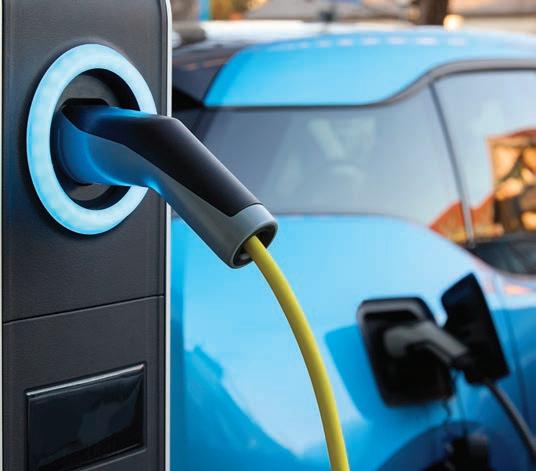












Editor : Gavin Dennett gavin@paragonmedia.com.au
Art director : Julitta Overdijk
Solar Map designer : Lee McLachlan
Publisher : Ian Brooks ian@paragonmedia.com.au

Sales director: Juanita Farrington
What a few months it has been for Australia’s clean energy industry. There has been a raft of major policy announcements that are establishing the blueprint for the nation’s transition to a renewables future and fighting climate change.
The Federal Budget in early May made the government’s ambition on clean energy very clear, with a $4 billion commitment to green initiatives, including a $2 billion injection into the hydrogen sector. Combined with a loosening of the purse strings for initiatives to electrify Australian homes and small businesses, the budget receives a big tick for its aspirational objectives. Of course, there is still a long way to go, but it is pleasing to see significant progress being made.
On the policy front, the Federal Government’s Safeguard Mechanism has undergone some significant amendments – following pressure from the Greens – to bring greater accountability to some of Australia’s heaviest greenhouse gas emitters. The revision of the legislation will make it di cult for any proposed oil and gas projects to be approved. You can read more about it on page 22.
In April, the Federal Government also signed o on the National Electric Vehicle Strategy, which is designed to increase mass uptake of EVs and is underpinned by a proposed fuel e ciency standard that will bring Australia into line with most of the developed world. Again, there is still a lot of work to be done in this space, but the framework is being put in place to map out our electric vehicle objectives. Read more about this in our cover story from page 36.

The Federal Government has also committed to a review of its National Hydrogen Strategy – in response to rapid changes in the international sector – to ensure Australia remains globally competitive in the market for the clean energy fuel. Read more on page 28.
Also featured in this issue is a snapshot of the top ESG trends in 2023 (page 34), a legal guide for solar installer documentation requirements (page 52), and a report on the giant strides being made in Australian rooftop solar and storage (page 56).
Gavin Dennett EcoGeneration editor
EcoGeneration acknowledges the Cammeraygal people, traditional custodians of the land on which this publication is produced, and we pay our respects to their elders past and present. We extend that respect to all Aboriginal and Torres Strait Islander people today.
juanita@paragonmedia.com.au
Phone: 0404 005 771
Published by: PARAGON MEDIA
ABN: 49 097 087 860 SSN: 1447-2309
PO Box 81, St Leonards, NSW 1590
Tel: +61 2 9439 1955
Email: query@ecogeneration.com.au
www.ecogeneration.com.au
Cover images: (Main) buffaloboy/Shutterstock.
(Inset — left to right):
All Shutterstock: Phillip Wittke; 3rdtimeluckystudio; Fly_and_Dive


EcoGeneration is printed on Lumi paper which is PEFC-certified and manufactured in an ISO 14001-certified mill. Lumi paper also contains premium white waste paper, reducing matter going into landfill. This magazine is available to interested parties throughout Australia and overseas. The magazine is also available by subscription. The publisher welcomes editorial contributions from interested parties, however, the publisher and the Editorial Board accept no responsibility for the content of these contributions and the views contained therein are not necessarily those of the publisher or of the Editorial Board. The publisher and the Editorial Board do not accept responsibility for any claims made by advertisers.
Unless explicitly stated otherwise in writing, by providing editorial material to Paragon Media, including text and images, you are providing permission for that material to be subsequently used by Paragon Media, whole or in part, edited or unchanged, alone or in combination with other material in any publication or format in print or online or howsoever distributed, whether produced by Paragon Media and its agents and associates or another party to who Paragon Media has provided permission.
Average net distribution 6616 Period ending September 2021


The largest solar farm in NSW officially opened on 16 March, 2023, with Minister for Climate Change and Energy Chris Bowen onsite to cut the ribbon at the New England Solar project.
Stage 1 of the ACEN Australia project near Uralla — in the NSW Government’s New England Renewable Energy Zone, in the state’s northeast — features close to one million solar panels, and will eventually generate 400MW of power.
Once Stage 2 is complete, a total of 720MW of power will be generated into the National Electricity Market (NEM), making it one of Australia’s largest solar farms.
“The work ACEN Australia is doing to accelerate Australia’s transition to a renewable energy future is here and now, and it starts with New England Solar,” says ACEN Australia CEO Anton Rohner.
“We decided to build New England Solar on a fully merchant basis to ensure it is online in time to help replace closing coalfi red power stations in NSW.”
Around 400 workers have been involved in the construction of Stage 1 of the New England Solar project, with 80 per cent coming from the New England region of NSW.
Stage 1 is currently generating 100MW, but will reach its 400MW capacity during the coming months.
Work on Stage 2 will commence in 2024, and once the project is operating at 720MW it will generate enough renewable energy to power 250,000 homes.
A new home bill savings simulator developed by the Climate Council is helping Australian families combat sharply rising power bills with simple measures to efficiently heat and cool their homes.
The new energy how-to guide and calculator offers annual savings on electricity bills from $1000 to almost $3000, depending on the state or territory of residence. The savings measures are based on the Climate Council’s latest report, “Smarter Energy Use: How to Cut Energy Bills and Climate Harm”.
“Australian homes are woeful when it

comes to energy efficiency, with the average house built roughly 20 years ago having a meagre 1.8-star energy rating on average,” says Climate Council senior researcher Dr Carl Tidemann.
“That’s little better than living in a tin shed, to be frank.
“Crappy energy efficiency has lumped millions of Australians with homes that are inefficient and expensive to run, and uncomfortable to live in: too hot in summer and too cold in winter with lots of outdated and energy-hungry appliances.
“We know Australians care about climate change and are worried about the cost of living and bill shock. The good news is you can tackle both these issues at the same time.”
Through a combination of electrification and getting off gas, and efficiency upgrades, Climate Council analysis shows the following potential annual household power bill savings across Australia’s major capital cities: Hobart, $2872; Canberra, $2707; Adelaide, $2174; Melbourne, $2170; Brisbane, $1588; Sydney, $1436; and Perth, $1085.
“Our online bill savings calculator will help people take the sting out of heating their home this winter,” says Dr Tidemann.
“Go to climatecouncil.org.au to work out how much money you can save by doing practical things such as sealing draughts and wall cavities, and insulating ceilings and walls. There are plenty of options for homeowners as well as renters.”






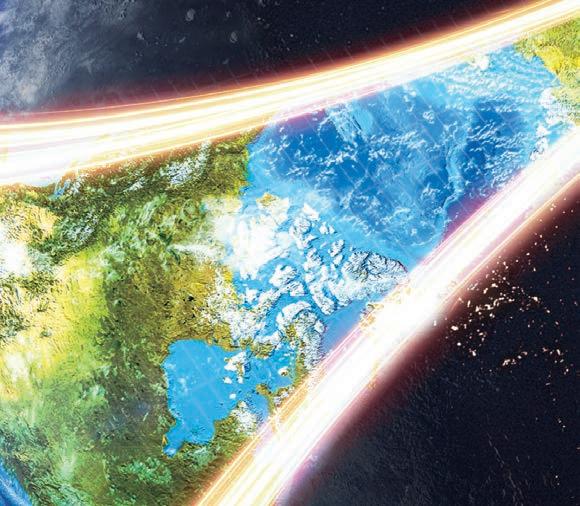
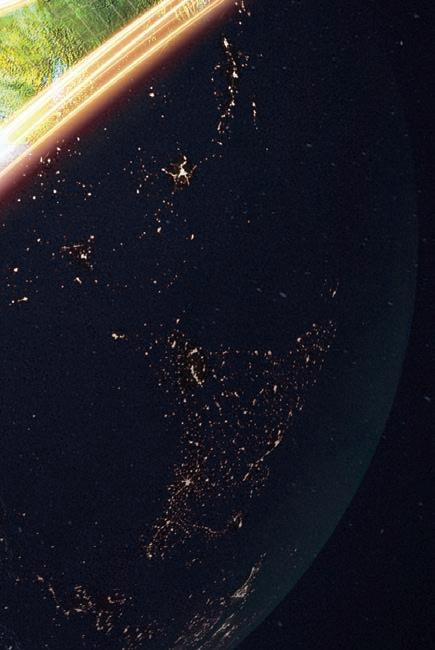





On the back of Labor regaining power following the NSW election on 25 March, attention has turned to the state’s accelerated retirement of coalfi red power stations and upscaled rollout of renewable energy.
NSW has a Labor Government in power for the fi rst time in more than a decade, with Chris Minns sworn in as the state’s 47th premier after a comfortable election victory.

New NSW Minister for Energy and Climate Change Penny Sharpe says the closure of coalfi red power stations is high on her agenda, along with addressing spiralling household electricity bills.
However, with AGL’s Liddell Power Station, in the NSW Hunter region, closing in April 2023 — wiping 10 per cent from NSW’s energy capacity — Sharpe has stated “the number-one energy priority is to keep the lights on” across Australia’s most populous state.





That could mean the NSW Government buying back Eraring Power Station, south of Newcastle, and extending its operation beyond its planned closure date of August 2025 to preserve 25 per cent of the state’s power and avoid an energy shortfall for its 8.2 million people.

Delays to the 2GW Snowy Hydro storage project have heightened concerns of a potential energy shortfall across NSW during the next five years, meaning the new Labor Government has to hit the ground running in planning for the state’s energy needs until Snowy Hydro is complete at the end of 2027.
Clean Energy Council chief executive Kane Thornton says he is looking forward to working with Premier Minns and his new
Electric vehicle charging company JOLT has commenced a partnership with Transport for NSW and is rolling out 50 streetside EV charging stations across Greater Sydney transport locations such as train stations and commuter car parks.
“We want to make NSW the easiest state to own an electric vehicle by increasing the number of chargers from 1000 to 30,000 during the next three years,” says NSW Treasurer Matt Kean.
“By 2030, we expect 50 per cent of new car sales to be EVs and we need to start expanding the infrastructure to make it as easy as possible for EV drivers.
“We want all drivers to recharge whenever and wherever they need to, whether it’s on a road trip, commuting to work or at home.”
government “to ensure NSW’s clean energy transformation accelerates, delivers on plans to drive the clean energy transition, and ensures we maintain strong private investor confi dence in NSW”.
Across the JOLT EV charging network, electric vehicle drivers can access 7kWh of free charging per day, providing 40-50km of range for a 15-20 minute charging time.
“JOLT chargers are located in select metropolitan areas to help resolve barriers to EV uptake: cost, range anxiety and charging infrastructure,” says JOLT CEO Doug McNamee.
“Through the expansion of fast chargers across the Transport for NSW network, JOLT provides EV drivers with convenient access to free, fast and clean EV charging.”

New Labor Government in NSW to prioritise state’s energy needsNew NSW Premier Chris Minns (left) with Prime Minister Anthony Albanese


Established in 1933 with a proud history, Wilson Transformer Company is Australia’s largest manufacturer of power and distribution transformer solutions operating two state-ofthe-art manufacturing facilities in Melbourne and regional Victoria and service facilities across Australia.
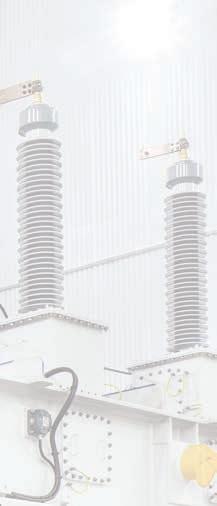




We support all the major electricity infrastructure providers and heavy electricity users and have a proven track record of supplying a wide range of transformer solutions across Australia and in targeted overseas markets.
Proudly MADE IN AUSTRALIA
New modelling indicates Australia requires more than $400 billion in new energy investment to keep pace with advanced economies and hit climate targets to limit global warming to 1.5°C above pre-industrial levels.
Independent advocacy organisation Clean Energy Investor Group says Australia will fall short of its climate targets unless $421 billion is injected into onshore and offshore wind, solar and battery technology.
The modelling by consulting fi rm Baringa — which is outlined in its report, “Decarbonising Australia: Accelerating Our Energy Transition With a Credible 1.5°C Scenario” — highlights that Australia’s current scenario planning for the National Electricity Market (NEM) is not consistent with global commitments for 1.5°C.
The report outlines additional steps the Federal Government, electricity sector, market bodies and Australia’s investment community need to take to deliver emissions reductions in line with a 1.5°C objective.
The Clean Energy Investor Group is urging the Federal Government to invest further in big batteries as back up to a renewable grid, and accelerated construction of transmission infrastructure.
“Decisive policy action by the federal, state and territory governments has set up Australia to be within striking range of a 1.5°C aligned future,” says Clean Energy Investor Group CEO Simon Corbell.
“Accelerating emission reductions in the NEM is the next step we need to take, but scenario planning must be commercially credible with the investment community.
“Through a continued and coordinated effort across government, industry and private markets, we can unlock $421 billion in total investment, ensuring Australia is
aligned with a growing global investor effort to make 1.5°C the benchmark for action.”
The Clean Energy Investor Group has identified six priority actions to stay on track to meet climate goals:
• Electricity sector needs a carbon budget to help governments and market bodies accelerate transition in line with targets.
• Transition requires national coordination between governments, industry and communities to accelerate coal closures and rollout of renewable energy.
• Investment in long-duration storage, which strengthens reliability and security during infrequent renewable energy droughts.
• Support for offshore wind development, which is unlikely to be cost-competitive in Australia until the 2040s without policy support.
• Accelerating the building of transmission network infrastructure.
• Supporting communities through the energy transition.

With Australia’s transition to clean power sources in full swing, construction of renewable energy infrastructure is forecast to jump almost 50 per cent in 2023 and peak in 2026.

According to Sydney-based company Macromonitor, which provides economic forecasting and research services for the construction industry, as coalfi red power stations close in subsequent years, construction of clean energy infrastructure — especially solar and wind — is expected to remain high on Australia’s path to net-zero emissions.
Macromonitor forecasts $5.2 billion investment in clean energy construction in 2023, $11.8 billion in 2026, and annual investment remaining at around $9 billion each year until at least 2032.
“This surge is being driven by several factors such as the Australian government’s commitment to emissions reduction; the closure of coalfi red power stations between 2023 and 2035; large-scale battery storage; new transmission routes to support renewable energy zones; and statespecific renewable energy targets,” Macromonitor economist Abdul Hannan told The Australian Financial Review
“The solar sector’s total value of work done will hit its highest point of $3.6 billion in 2024. Similarly, the wind sector’s total value of work done is expected to reach a new peak of $5.4 billion in 2026, which will coincide with a significant peak in construction activity in Queensland.”
Construction of large-scale battery storage in Australia is estimated at $1.2 billion in 2023 and is expected to rise to $1.8 billion per year between 2024 and 2026.
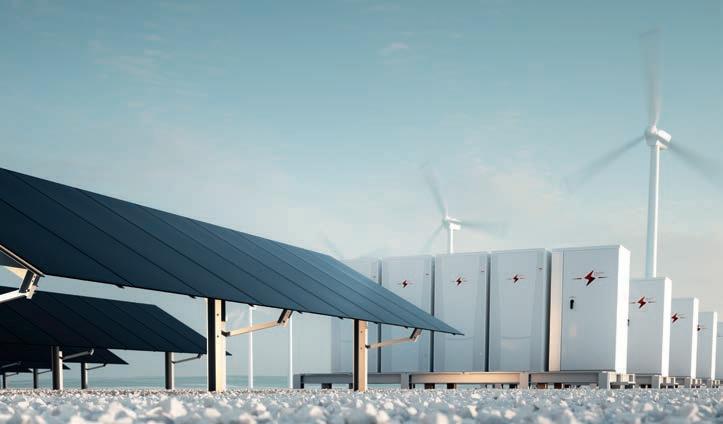
Australia’s fi rst commercial-scale green hydrogen project is set to commence production in late 2024 following the recent acquisition of Northam Solar Farm in Western Australia by Infi nite Green Energy (IGE).





IGE has partnered with South Korean construction and engineering company Samsung C&T to build the Northam Hydrogen Project (MEG HP1), 100km northeast of Perth, which has already completed front-end engineering and design.

The $110 million phase-one construction of MEG HP1 is targeted to be completed in the last quarter of 2024, and will include a 10MW hydrogen electrolyser and truck-loading terminal.


The plant is expected to produce up to four tonnes of renewable hydrogen for the medium and heavy transport industry per day.
“Hydrogen is expected to be the most cost-competitive, low-carbon solution for medium-duty and heavy-duty transport, and Samsung C&T recognises the global opportunity and the environmental benefits,” says IGE CEO Stephen Gauld (pictured below, on left, with IGE chairman Peter Coleman, on right).
“MEG HP1 will enable Western Australia to take a leadership position in the use of renewable hydrogen in transport, consistent with the objectives of the Western Australian Government’s Renewable Hydrogen Strategy.”
The Northam Hydrogen Project is Samsung C&T’s fi rst foray in Australia.




“We are committed to fast-tracking the energy transition, creating opportunities for people and businesses, and production of green hydrogen is a key component of that story,” says Samsung C&T vice-president Andrew Ahn.
The green hydrogen produced by MEG HP1 will be primarily consumed by Western Australia-based waste companies for use in back-to-base refuse collection and fl eet vehicles.
IGE has a memorandum of understanding to supply six Western Australian transport companies, in addition to one company already under contract in the state.


Taronga Zoo in Sydney and Taronga Western Plains Zoo in Dubbo have become the fi rst zoos in NSW to be powered by 100 per cent renewable electricity.
Taronga Conservation Society Australia had set a target of operating on 100 per cent renewable power by 2030 so the recent switch means the not-for-profit organisation has achieved its goal seven years early, sparing 7000 tonnes of CO2 from being released into the atmosphere annually — the equivalent weight of 300 humpback whales.
“Climate change is a threat to many of Australia’s unique fl ora and fauna, and wildlife across the globe,” says Taronga Conservation Society Australia CEO Cameron Kerr AO. “More than 1900 species in Australia are on the brink of extinction and climate change is accelerating this process.
“As a conservation organisation, we are dedicated to safeguarding our planet and securing a future for wildlife. Intrinsic within that is a commitment to act with leadership in environmental sustainability and climate change action, and this is a significant milestone in our sustainability journey.”
Taronga is procuring electricity from Red Energy — which is sourcing clean energy from a solar farm near Western Plains Zoo — in addition to the installation of 500kW of solar panels across both zoos.
“Environmental leadership is one of six priorities in Taronga’s strategic plan, and we want to lead by example in reducing the impact of our operations and ensure we are doing everything in our power to protect our world and its wildlife,” says Taronga Conservation Society sustainability manager Bridget Corcoran.
A new report from international strategic research provider BloombergNEF says at least US$21.4 trillion needs to be spent on global electricity grids by 2050 to reach the world’s net-zero emissions goals and restrict the earth’s warming to 1.5 degrees Celsius from preindustrial levels.
The report, “The New Energy Outlook: Grids”, states that grids worldwide are grossly insufficient for future energy needs.
Of the projected US$21.4 trillion spend on grid infrastructure, US$4.1 trillion is required to sustain existing grids, and US$17.3 trillion is needed to expand grids for new electricity consumption and production, including US$5.1 trillion on digitalisation.
To enable commitment to a spend of this scale, the report recommends significant policy intervention by government, including reducing red tape in gaining permits for projects, and providing incentives for utilities to pursue digitalisation and grid fl exibility.
As bi-directional powerline networks expand during the next three decades, the report estimates 80 million kilometres in global grid growth between 2022 and 2050, which is more
than enough to replace the current global electricity grid. This includes an estimated 68 million kilometres of above-ground lines, 12 million kilometres of underground cables, and 0.2 million kilometres of submarine cables worldwide.
“We must effectively double the size of the global electricity grid by 2050,” says the report’s lead author, Sanjeet Sanghera, head of grids and utilities at BloombergNEF.

“This future grid needs to be smart, fl exible and responsive, enabling us to harness the full potential of renewable energy rather than be bogged down by it.
“The legacy grid was built for the industrial revolution and outperformed our wildest expectations. But the project ahead is to decarbonise the global economy by connecting terawatts of renewables and electrifying as much as possible of the end-use economy.”
A recent report from the Future Battery Industries Cooperative Research Centre (FBICRC) reveals Australia’s battery industry could provide $16.9 billion per annum in valueadd and support 61,400 local jobs by 2030.
The report, “Charging Ahead: Australia’s Battery Powered Future”, analyses global and geopolitical influences on the potential growth of Australia’s battery industries and spans Australia’s resource, energy, industrial, foreign affairs and international trade policies.
“In light of recent geopolitical developments, our report shows Australian policymakers should explore more aggressive industry policies, target markets that are looking to diversify their supply chains, and partner with geopolitical allies to enable and enhance the potential growth of Australia’s battery industry,” says FBICRC CEO Shannon O’Rourke.
“The challenge is to help build the Australian manufacturing ecosystem and get it to scale. Measures such as the National Reconstruction Fund are essential to give Australian business an opportunity to compete at world scale.”
The report makes key recommendations to harness Australia’s opportunities from significantly accelerated demand for batteries in the past 18 months.
“We are seeing huge interest in battery
National Energy Efficiency Conference
24-25 May, 2023 | Sydney eec.my.canva.site/neec23
Australian Clean Energy Summit
18-19 July, 2023 | Sydney australiancleanenergysummit.com.au
Energy Next
18-19 July, 2023 | Sydney energynext.com.au
Australia Wind Energy 2023
25-26 July, 2023 | Melbourne windenergyaustralia.com
Connecting Green Hydrogen APAC 2023
technologies as part of the energy transition,” says the report’s author, Shaun Chau, sustainability services managing director at Accenture.
The opportunity for Australia to grow its role in the battery supply chain is large. However, other nations have also woken up to the prospect. To capitalise, Australian industry, government and universities need to move decisively and quickly to create the right enabling environment, attract and develop the appropriate capabilities and ready a coordinated industry for action.”
Other fi ndings from the FBICRC report include:
• The opportunity for Australian batteries is now more than double previous forecasts.
• Major global economies are vying for greater shares of the battery value chain, creating opportunities and challenges for Australia’s battery industries.
• Australia is cost-competitive but will need to lean into its mineral diversity, reliability, security and environmental, social and governance credentials to capture value chain opportunities.
• Governments must act decisively with policy initiatives to capture midstream and downstream value in the global battery industry.
25-26 July, 2023 | Melbourne apac.gh2events.com
RE+
11-14 September, 2023 | Las Vegas, USA re-plus.com
Modern Manufacturing Expo
20-21 September, 2023 | Sydney modernmanufacturingexpo.com
All-Energy Australia
25-26 October, 2023 | Melbourne all-energy.com.au
Solar & Storage Live Australia 2024
21-22 February, 2024 | Sydney terrapinn.com/exhibition/ solar-storage-live-aus
Energy Networks Australia Conference and Exhibition
19-21 March, 2024 | Adelaide energynetworks.com.au
International Renewable Energy Conference
7-11 April, 2024 | Adelaide


It was a mixed report card for clean energy in 2022, with rooftop solar leading the charge and record levels of large-scale projects under construction, but a slowing in new commitments is cause for longer-term concern, writes Clean Energy Council chief executive Kane Thornton.
The rate of new large-scale renewable energy projects slowed in Australia in 2022 compared to the highs of 2021. However, there are plenty of reasons to be optimistic about the growth of the sector, thanks to record levels of construction activity and the unrelenting uptake of rooftop solar, all backed by increasingly positive political sentiment around the country.

As revealed in the Clean Energy Council’s “Clean Energy Australia 2023” report, rooftop solar is the driving force behind Australia’s clean energy transition in terms of capacity added, with 2.7GW added in 2022. Although that figure is down from 3.3GW in 2021, it still represents the highest contribution in the renewables sector.


We know rooftop solar is the feather in Australia’s clean energy cap, and we saw more evidence of that recently when it was announced that rooftop solar systems supplied more of Australia’s energy than brown coal during the recent Australian summer – a period that was notable for enjoying less sunshine than in an average year.
Rooftop solar provided a record
 Photo: zstock/Shutterstock
Photo: zstock/Shutterstock
14 per cent of Australia’s electricity needs during summer and dispatched more energy to the grid than all other renewable sources, including grid-scale wind and solar farms.
Australia really is a world leader in rooftop solar.

The large-scale sector contributed 2.3GW in 2022, down from 2.9GW in 2021. The number of large-scale projects completed in 2022 (20) was also down on the previous year (27). However, while those figures may be reduced, the Australian renewable energy industry commenced construction on more than 5000MW of wind and solar farms
in 2022 – the highest year for new renewable construction on record.
The final quarter of 2022 also saw investment in financially committed large-scale generation and storage projects reach $4.3 billion – the highest quarterly investment since Q3 2018.
Overall, renewable energy accounted for 35.9 per cent of Australia’s total electricity generation in 2022, up from 32.5 per cent in 2021. That figure has more than doubled since 2017, when renewable energy accounted for just 16.9 per cent of generation.
But while these figures are promising, we must not take sustained growth for granted. A lot more work is required at government level to encourage the investment and development needed to reach the Federal Government’s stated target of 82 per cent renewable energy by 2030.
This time last year, we were concerned about the Federal Government’s continued backing of coalfired power. Now, following on from Labor’s resounding federal election victory in May 2022, we are focused on how we can accelerate the transition, accepting there is more widespread support for the clean energy transition than ever.
At the time of writing, there has been a great deal of media interest in the closing of the coalfired Liddell Power Station, in the NSW Hunter Valley, after five decades of operation, as well as the planned closure of Australia’s largest coalfired power station, Eraring, at Lake Macquarie, NSW, in 2025 – the latter of which has been brought forward by seven years.
The planned closures of fossil fuel power plants such as these will always raise the question of whether the grid has enough energy capacity to ensure supply continues uninterrupted. There are no supply losses projected for these closures, but significant
changes to the grid highlight the importance of grid security and network reform, which the Clean Energy Council is consistently and strongly advocating for.
Accepting we are not yet bringing on utility-scale renewable projects at the rate needed to meet national energy targets, it is at least encouraging we’ve seen so many investment commitments made since the election. Bringing renewable energy capacity online before high-profile closures such as Liddell and Eraring will be essential as we accelerate the transition, to ensure energy consumers’ supply is not broken and their energy prices remain reasonable and steady.
The 2022 federal election sent a clear message to the world – not just through Labor’s victory, but through the election of so many Greens and Teal independent candidates running campaigns focused on climate change and renewables – that Australia intends to be a global force in the clean energy industry.
We have myriad challenges to face both domestically and internationally as the rate of renewable energy growth begins to scale. But there are positive signs across the country that we’re ready to embrace these challenges.
The important thing now is we don’t take the growth of our industry for granted. We’re making progress, but there is much work still to be done.
With that in mind, why not join us and Australia’s clean energy leaders when we host the Australian Clean Energy Summit (ACES) in Sydney, in July 2023. The two-day conference brings together heads of industry, government and finance to share the business models and explore the challenges and opportunities that will drive the clean energy transition.
Kane Thornton has more than a decade of experience in energy policy and leadership in the development of the renewable energy industry. His column is a regular feature in EcoGeneration, where he analyses industry trends and explains the impacts of federal and state renewable policies on the energy sector.

“We must not take sustained growth for granted. A lot more work is required to reach the target of 82 per cent renewable energy by 2030.”
Australian solar is booming and the industry is only getting stronger as the nation embraces renewables, writes Clean Energy Regulator chair David Parker.
At the heart of the nation’s renewables transition you’ll find everyday Australians choosing to install rooftop solar. At an average rate of one in three homes having solar, we’re leading the world.
Our increasingly electrified lifestyles are creating enormous demand for electricity, which is only set to increase.
It is shaping up to be a record year in 2023 as Australian households and businesses push ahead in their adoption of small-scale rooftop solar.
The Clean Energy Regulator’s December 2022 Q4 Quarterly Carbon Market Report (QCMR) showed rooftop PV investment
rebounded strongly in the second half of the year with almost 315,000 systems being installed. These systems have added an additional 2.8GW of renewable energy capacity – the third highest annual capacity installed on record (see table below).
In 2023, the average payback period on a PV system is less than four years, continuing the trend that started in 2019. A combination of factors including increased competition, efficiency gains in the manufacturing and installation of solar, and increasing energy costs have seen payback periods remain low.

As businesses seek to manage cost pressures from high energy prices, it’s likely commercial demand for small-scale solar will also increase throughout 2023. Last year, while only five per cent of all Small-scale Renewable Energy Scheme
(SRES) installations were commercial and industrial – systems greater than 15kW – they contributed 18 per cent of total additional installed capacity. I believe there is significant untapped potential for commercial solar installations, and opportunities for savvy solar installers in this market.
In 2022, Australia averaged 35 per cent renewable energy across all our grids and on that trend, 2023 looks set to reach or exceed the record 3.2GW installed capacity of 2021. On this current trajectory, we expect Australia will be at 50 per cent renewables by 2026, which puts us on track to potentially reach the government’s target of 82 per cent renewables by 2030 if other required transition issues can be addressed.
While Australian homeowners may be world leaders in rooftop solar, not every property is suitable for a variety of reasons, including how energy is metered. However, we are seeing innovative business models emerging.
Last year, the Australian Government announced $200 million in grant funding for the development of solar banks and community batteries which have the potential to help people living in high density apartments. Depending on the type of building, the benefits can be for tenants or owners through reduced common costs (usually covered by strata levies). Additionally, extra power on the common area meter can be useful for electric vehicle charging.
There are also emerging opportunities for people living in public housing to access affordable solar.
In Victoria, there’s been a push by the
Victorian Public Tenants Association (VPTA) to install solar panels on every public housing property. In its state budget submission, the VPTA estimates 23,500 existing public housing properties are suitable for installation of rooftop solar panels.

The Australian Government’s community batteries policy and grant funding are well underway, and ongoing announcements by states and territories will also be instrumental in supporting our small-scale growth throughout 2023.
The Phase 2 regulations – Renewable Energy (Electricity) Regulations 2001 – that passed into law in 2022 have provided the Clean Energy Regulator with additional powers to declare non-compliant industry participants ineligible to participate in SRES. This includes installers, designers, retailers and component manufacturers.
Participants see the changes as a means of strengthening integrity, not just for small-scale technology certificates (STC) claims, but for improved installation of approved solar products and consumers getting what they paid for.
The Clean Energy Regulator has been actively providing industry with education and communication on various compliance matters across SRES. Levels of compliance are high, but we’ve also seen cases of wilful fraud. The Clean Energy Regulator takes a zero-tolerance approach to fraudulent behaviour and was instrumental in prosecuting a number of these cases in 2022,
with more in the pipeline this year.
The Clean Energy Regulator remains committed to working collaboratively with all levels of government, industry and stakeholders to support the integrity of solar schemes by ensuring our regulation is effective, efficient and transparent.
Everyday Australians and businesses have done what no other country has done, and we’re on a fast trajectory.
The Australian Government is supporting this by providing significant investment in the renewables transition, underpinned by a robust regulatory framework.
The Clean Energy Regulator has worked with industry to make compliance easier and to ensure non-compliance is difficult because the industry has to be trusted by its clients or the great transition to renewables will be that much harder.
David Parker AM has been chair of the Clean Energy Regulator since July 2017. With a career spanning more than 25 years with Commonwealth Treasury, he has worked across financial sector liberalisation, tax reform, macroeconomic forecasting and policy, competition policy, energy policy and international economics.

“As businesses manage cost pressures from high energy prices, commercial demand for small-scale solar will also increase throughout 2023.”
The 2023-2024 Federal Budget is being hailed as a win for Australia’s clean energy superpower ambition, while addressing sharply rising cost-of-living pressures for the nation’s households.
 By Gavin Dennett
By Gavin Dennett
Treasurer Jim Chalmers has handed down the 2023-2024 Federal Budget that is big on spending and sends a clear message about the role of clean energy in Australia’s economic future.
In Chalmers’s second Federal Budget, the Federal Government has delivered a $4.2 billion surplus for the financial year, the first time Australia’s budget has been in the black since 2008. But despite the surplus, the budget has splashed $21 billion across the nation, with a large chunk going towards easing cost-of-living pressure on households, as well as welfare boosts such as JobSeeker, rent assistance and social housing, plus bulk-billing relief, child care subsidies and pay rises for health care workers.
The Federal Budget also makes a clear statement about Australia’s clean energy superpower ambition, with $4 billion in new funding commitments that will drive the electrification of Australian homes and small businesses, and deliver a shot in the
arm for the nation’s green hydrogen sector.
“The Clean Energy Council has advocated for work to begin on a Clean Energy Superpower Masterplan, and the Federal Government has listened,” says Clean Energy Council chief executive Kane Thornton. “For the first time in years, we have a Federal Government that listens to industry and deeply understands what is required, taking commendable action since coming to power, and in this budget.
“When clean energy wins, families, communities and businesses win. This is good news for industry, but also for all Australians.”
Part of the Federal Government’s clean energy stimulus is designed in response to the US Government’s Inflation Reduction Act, to ensure Australia remains internationally competitive in the global renewables market.
The most noteworthy clean energy commitment in the Federal Budget is
$2 billion in production incentives for Australian renewable hydrogen – the Hydrogen Headstart program.
“The Australian Hydrogen Council has asked the Federal Government for a strong signal that it is committed to the hydrogen industry’s development, particularly in light of fierce global market competition for investment dollars,” says Dr Fiona Simon, CEO of the Australian Hydrogen Council.
“This budget is exactly the signal the market needed to remember – and act on – the fact Australia has the potential to be a world-leading hydrogen producer. The Australian Hydrogen Council commends the Albanese Government for this demonstration of confidence in the vital role renewable hydrogen has to play in the energy transition.
“Competitive hydrogen production contracts are a much needed market mechanism to provide revenue support for flagship projects, and will help get more large hydrogen projects off the ground so we can scale up to gigawatt-scale capacity as soon as possible.
“There is much more to do, but as the name of the Hydrogen Headstart mechanism indicates, this is an important early step.”
In his budget speech, Chalmers announced $300 million for electrification and energy performance upgrades for social housing, on the back of $1 billion in new funding for the Clean Energy Finance Corporation to offer solar, storage and electric upgrade finance to more than 170,000 homes.
“This is Australia’s first electrification budget,” says Rewiring Australia co-founder and chief scientist Dr Saul Griffith.
“It positions us to become a world leader
Photo: chayanuphol/Shutterstockin the efficient electric energy system of the future. It demonstrates federal ministers have worked hard to start the massive shift towards a new energy paradigm across the economy.
“The electrification budget builds on Australia’s love affair with rooftop solar. It will help households to realise cost savings from substituting expensive gas machines for clean, electric alternatives. This investment allows us to use abundant Aussie wind and sunshine to power more of our driving, cooking and heating, simultaneously slashing energy bills and carbon emissions.
“We are excited the government is making a substantial downpayment on an answer to the US Inflation Reduction Act.”
At the centrepiece of the 2023-2024 Federal Budget is a $14.6 billion short-term, cost-of-living package. It includes the Energy Bill Relief Fund, which will provide direct assistance to eligible households and businesses to ease bill shock due to sharply rising electricity expenses.
“During the next two years, up to $500 in direct assistance will provide welcome relief for millions of Australian households, and $650 for small businesses that have come under increasing financial pressure,” says Energy Consumers Australia CEO Lynne Gallagher.
“It will see more than 5.5 million households eligible for some assistance with their electricity bills, in addition to around one million small businesses.
“As well as this direct assistance, we welcome investment to support consumers to control their energy use which will help drive down bills. These include new investment in the Clean Energy Finance Corporation, social housing and small business energy incentives to support electrification and more efficient use of energy.”
Gallagher says the Energy Bill Relief Fund will help offset rising energy prices, which are expected to hit 25-30 per cent during the next 12 months.
“The recent price increases come on top of double-digit increases the previous year and will certainly be felt by consumers who are already struggling with multiple cost-of-living and cost-of-business pressures,” she says. “The Federal Budget combines much needed immediate direct assistance with investments that help consumers get control of their energy costs.”
Community organisation Australian Parents for Climate Action also endorses the cost-of-living relief for Australian households and social housing.
“We welcome the increased attention on long-term energy cost solutions for Australian families who are battling rising bills,” says Nic Seton, CEO for Australian Parents for Climate Action. “Clean and efficient energy solutions are the surest path to reducing energy costs.
“However, these announcements only go part way towards upgrading Australian homes, and more is needed to ensure all homes provide affordable comfort through equitable access to cheap, clean energy solutions.”
However, not everyone is behind the
“populist” cost-of-living measures announced in the budget, with critics viewing the relief package as merely a temporary band-aid solution.
“The measures in this budget for cost of living are, for the most part, temporary,” says Climate Council CEO Amanda McKenzie. “This is a missed opportunity to permanently lower people’s power bills.
“To meet the climate challenge head on, Australia needs to urgently unlock the most affordable energy source available: renewables. Sure, this Federal Budget provides renewables assistance to 170,000 households, but when you consider the critical challenge of electrifying everything with renewable power, backed with storage, for 10.8 million households, that barely gets us off the starting blocks.
“The Labor Government has demonstrated it wants to support Australians who are struggling, but climate change makes every Australian vulnerable so the scale of investment on climate action needs to match the task ahead of us.
“We can’t settle for a slow jog when the climate crisis calls for a sprint.”

“We welcome investment to support consumers to control energy use, which will help drive down bills.”
The Greens have succeeded in forcing the Federal Government to make a raft of amendments to its Safeguard Mechanism policy, which requires Australia’s largest greenhouse gas emitters to keep their net emissions below a baseline limit.
The Greens and Labor were at loggerheads on the direction of the proposed legislation, but the two parties came to an agreement on 27 March, 2023, to make several significant changes that will have serious ramifications for any
proposed oil and gas projects, making it difficult for them to be approved.
The Greens are lauding the changes as a major win for the party, with the inclusion of a hard cap on emissions – among several other amendments – meaning Australia’s biggest polluters will be accountable for their emissions with ceiling limits in place.
“Coal and gas have taken a huge hit,” said Greens leader Adam Bandt. “Through our negotiations on the Safeguard Mechanism, the Greens have stopped about half of the 116 new coal and gas
projects in the pipeline from going ahead.
“The Safeguard Mechanism, which regulates Australia’s 215 biggest polluters, will now have a hard cap on emissions, meaning real pollution must actually come down and the coal and gas corporations can’t buy their way out of the cap with offsets. This puts a limit on coal and gas expansion in Australia.”
The Greens say the additional reforms agreed to by the party and Labor will derail the controversial Beetaloo Basin gas field fracking project in Northern Territory,
 Photo: Parilov/Shutterstock.com
Photo: Parilov/Shutterstock.com
despite it receiving the green light from the NT Government. All new projects in the region will now require net-zero Scope 1 emissions from the outset.
“We’ve forced the project to offset all emissions,” reads a Greens statement. “This is a huge financial barrier to the project proceeding, and its viability is in question.”
The Greens say the Safeguard Mechanism reforms will also scupper plans for Santos’ proposed offshore Barossa gas field in Australian waters near the Tiwi Islands, off the coast of Northern Territory.

“Santos will be required to offset all its CO2 emissions, placing a huge financial hurdle in the way of this project,” reads the statement.
Minister for Climate Change and Energy
Chris Bowen said the “overdue, sensible” finalisation of the Safeguard Mechanism
Bill is a key milestone in achieving Australia’s 43 per cent emissions reduction target by 2030.
“We are a step closer to achieving net zero by 2050,” he said in a statement. “We thank those across Parliament who continue to approach this legislation in a constructive way to ensure accountability, transparency and integrity for the scheme, and ensure flexibility and support for industry.
“Business and climate groups have been clear that Parliament should pass the strengthened legislation in front of it and deliver overdue policy certainty.
“These reforms are crucial to our climate and economy – supporting Australian industry and ensuring they will continue to be competitive in a decarbonising world.”
The Climate Council has thrown its support behind the strengthened Safeguard Mechanism, which will be in operation from 1 July, 2023.
“This will be Federal Parliament’s first reform to genuinely cut pollution in a decade,” says Climate Council CEO Amanda McKenzie. “Almost one year ago, Australians sent a clear message at the polls that they wanted our Parliament to act on climate change. Now they are getting on with it.
“This will mean more clean, renewable power and less pollution. Finally, as a nation, Australia is starting to tackle the climate crisis.”
The Climate Council had been advocating for amendments to the Safeguard Mechanism, and worked with the Federal Government to offer guidance in Australia’s climate-change approach.
“The Climate Council has been meeting with politicians across Parliament to provide reliable, evidence-based information in advocating for a strengthened Safeguard Mechanism that will result in genuine emissions reductions,” says McKenzie.
“We welcome some of our suggestions being included. This proves how important and powerful a community-funded and independent climate organisation can be.
“This agreement is a massive wake-up call to any board or business executive who thinks they can keep stalling genuine climate action. The era of climate gridlock in Australia is over and the only viable path for any business is genuine, deep cuts to carbon pollution this decade.
“We thank and recognise every Parliamentarian who put Australians first in negotiating in good faith and will be passing laws that finally start to regulate the biggest polluters.”
Key improvements to the Safeguard Mechanism the Climate Council advocated for include:

• Capping total emissions under the Safeguard Mechanism to ensure new and expanded fossil fuel projects can’t blow out this carbon budget and drive up national emissions.
• Making new gas facilities fully accountable for their emissions from day one so they are not forcing other future-focused industries to make even deeper cuts to their emissions.
• Subjecting any new project that would add significantly to emissions under the Safeguard Mechanism to a rigorous assessment.
• Ensuring public funding through the Powering the Regions Fund is not directed to coal and gas projects, and supports future-focused industries.
“The Safeguard Mechanism is just one weapon in the war to drive down Australia’s emissions,” says Climate Council head of advocacy Dr Jennifer Rayner. “We need to throw the whole arsenal at tackling harmful climate change.
“As a priority, Australia needs strong environmental laws that properly consider climate impacts; an end to fossil fuel financing and public subsidies; much tighter limits on offsetting to ensure we are achieving genuine and steep emissions reductions; and a ban on greenwashing so coal and gas companies can’t keep gaslighting Australians about their climate plans.”
“This agreement is a massive wake-up call to any board or business executive who thinks they can keep stalling genuine climate action.”






The United Nations’ Intergovernmental Panel on Climate Change has handed down its “final warning” for immediate upscaled global efforts to reduce carbon emissions before it’s too late.
By Uma SinghThe United Nations’ Intergovernmental Panel on Climate Change (IPCC) has handed down a powerful new report on the devastating reality of the climate crisis, and urges swift, accelerated action to phase out fossil fuels and reduce carbon emissions.
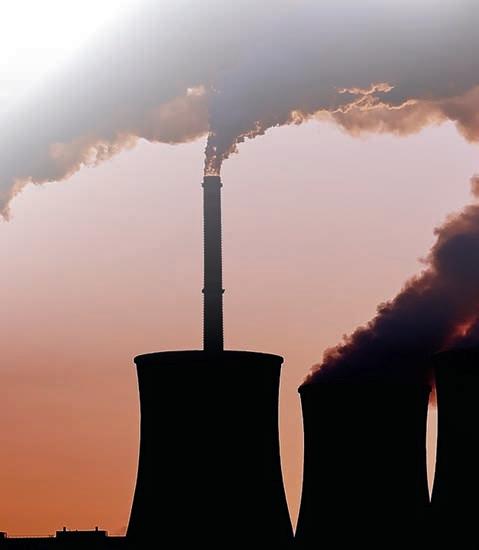
The IPCC’s “Sixth Assessment Synthesis Report” – the closing chapter of the IPCC’s sixth cycle of assessment – outlines the catastrophic reality of climate change and stresses the need for urgent action this decade to avoid global temperatures exceeding the tipping point of 1.5 degrees Celsius above preindustrial levels.
The report is considered a fi nal warning and is described by UN Secretary General Antonio Guterres as a “survival guide for humanity” because of its urgent declaration to heed science and take immediate action on climate change.
Without drastic action to reduce emissions this decade, the report – compiled by almost 300 scientists across 67 countries – states that irreversible damage will be done to the earth’s atmosphere, oceans, land and frozen poles that will have significant consequences, potentially for thousands of years, including rising sea levels and extreme drought, heatwaves and flooding.
“This report is a clarion call to massively fast-track climate e orts by every country


and every sector and on every timeframe,” says Guterres. “Our world needs climate action on all fronts: everything, everywhere, all at once.”
At the heart of the response to the climate crisis is the transition to renewable energy, with the report imploring governments around the world to implement widespread adoption of electrification, including clean energy sources such as solar and wind.
“The evidence is crystal clear and the science is unequivocal – it’s just the lack of political will that is holding us back from the bold action necessary to avert a climate catastrophe,” says Dr Stephen Cornelius, the World Wildlife Fund’s (WWF) global deputy lead, climate and energy. “Leaders who ignore the science of climate change are failing their people. A rapid phase-out of fossil fuels is essential, as is protecting and restoring natural ecosystems.”
The world’s leading climate scientists are urging governments to heed the report’s warnings and urgently implement its recommendations
before it’s too late, including rapidly slashing emissions across all sectors, boosting e orts to build resilience to extreme weather events, and protecting and restoring nature.
“The central message from climate scientists is unmistakable: governments must rally to drastically cut emissions and cease the extraction and burning of fossil fuels this decade,” says Dr Simon Bradshaw, the Climate Council’s director of research.
“That message has been delivered repeatedly, and consistently, for many decades. This report will no doubt do the same. We are seeing progress when it comes to renewable energy uptake, and cleaner transport, but things just aren’t moving fast enough.
“If we haven’t seriously turned things




around by the time the next such assessment report is due, we’ll be in very deep trouble.

“We have a choice to act swiftly this decade. If we start giving it our all right now, we can avert the worst of it. So many solutions are readily available, such as solar and wind power, storage, electric appliances and clean transport options, but we need to get our skates on.
“This is why it is important to get the Safeguard Mechanism right. The era of big polluters trading our future for a quick dollar must come to an end. Coal, oil and gas needs to be phased out and left behind in the polluting past where they belong, replaced by the clean industries of the future.”
Australia is particularly vulnerable to the ravages of climate change, with major impacts including an increase in heatwave and flooding events; irreversible loss of coral reefs; loss of alpine species; collapse of forests in southern Australia; loss of kelp forests; and rising sea level. The nation is already experiencing some of these events.





“Australia is one of the most vulnerable developed countries to the impacts of climate change and we’ve seen the risks dramatically escalate during the past five years,” says Professor Lesley Hughes, Climate Councillor, former IPCC author and Distinguished Professor of Biology at Macquarie University. “We have much to lose and everything to gain by acting decisively to get emissions plummeting in this critical decade.
“While this is a summary report of work we had already seen in development, there is no doubt its fi ndings will be dire. Since the previous IPCC report was released, we’ve had even more unnatural disasters. We must focus on the fact that predictions are now becoming observations.
“We’ve also had a period since the previous IPCC report came out where global emissions are rising once again so the gap between where we are and where we need to go is increasing rather than decreasing.
“We have a closing window to drive global momentum towards getting us back on track for a safer climate. Governments must heed
the warnings in this report – every fraction of a degree of warming matters, and every action matters.”


While Australia is taking a rmative action with legislated emissions goals as part of the 2022 Climate Change Bill – a 43 per cent reduction from 2005 levels by 2030 and net zero by 2050 – the scientific community’s consensus is that more needs to be done.
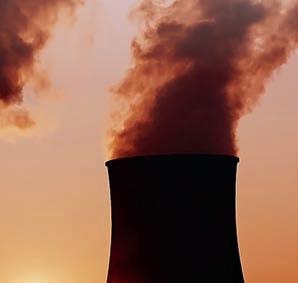


“WWF-Australia commissioned research found Australia needs to slash its emissions by 74 per cent by 2030 and reach net-zero emissions by 2035 to do our fair share to help limit warming to 1.5 degrees Celsius,” says Dr Krista Singleton-Cambage, WWF-Australia’s head of climate and food security.
“We urge the Australian Government to take all opportunities to reduce our emissions, in line with current science, and increase our resilience to address the impact of climate change.
“Australia can play a central role. We have what it takes to build a world-leading renewables industry, phase out fossil fuel exports, and become a global leader on climate action.”
Sir David King, chair of the Climate Crisis Advisory Group, says science is o ering solutions to reverse the e ects of climate change, and it is up to the world’s population to work together as one.
“The good news is science has provided a clear roadmap for us to get back on track,” he says.




“We must continue to rapidly reduce our global emissions, but we also must simultaneously increase investment, awareness and adoption of greenhouse gas removal at scale, as well as action climate repair technologies and techniques.
“By adopting the ‘three R’ strategy of reduce, remove and repair, we can deliver a safe and manageable future for humanity. But time is no longer on our side.”
 Photo: kamilpetran/Shutterstock
Photo: kamilpetran/Shutterstock
The CSIRO has released its latest roadmap in Australia’s transition to net-zero emissions, which identifies the storage of renewable energy as essential to a cleaner and greener future.
The “Renewable Energy Storage Roadmap” report from Australia’s national science agency states the nation’s storage capacity must significantly increase from current levels to keep pace with the nation’s rapidly rising electricity demand.
According to the report, the National Electricity Market (NEM) will require a 10 to 14-fold increase in its electricity storage capacity between 2025 and 2050, especially as the building and transport industries fully electrify.
Existing storage technologies such as batteries and pumped hydro have been identified as playing key roles in upscaled forms, although emerging technologies must also be considered.
“Over the long-term, storage will accelerate the integration of renewables, enhance grid stability and reliability, and support decarbonisation of industries,” says CSIRO chief executive Dr Larry Marshall.
“There is no silver bullet for reaching net zero so we need multiple shots on goal, like from renewables, batteries, hydrogen, thermal storage, pumped hydro, sustainable aviation fuels and a host of new science-driven technologies.
“Reaching net zero is a wicked challenge. We need a robust pipeline of projects that use diverse technologies supported by industry, government, research and community stakeholders to ensure no industry and no Australian is left behind.”
With di erent sectors requiring fit-for-purpose energy storage solutions, the CSIRO roadmap aids future planning across industries.
“For example, batteries may be the best option for local and short-duration storage of electricity, while thermal or heat energy – such as steam – might be technology better suited for heat-intensive industries,” says CSIRO energy director Dr Dietmar Tourbier.
“Government and industry have recognised energy storage as a priority. However, significant knowledge gaps remain, requiring further investigation to support informed action.
“Co-investment is required across the system to accelerate technology commercialisation and upscale across a diverse portfolio of energy storage technologies.”
In compiling the CSIRO roadmap, the report’s authors combined the science agency’s modelling and analysis with consultation from government and industry stakeholders.


The CSIRO’s “Renewable Energy Storage Roadmap” pinpoints solar thermal power as the future of the nation’s long-duration storage.
The CSIRO’s “Renewable Energy Storage Roadmap” has been endorsed by the Australian Solar Thermal Energy Association (AUSTELA), particularly its fi ndings that outline the significant role concentrating solar thermal power (CSP or CST) will play in supplying industrial heat and long-duration storage to the nation.
CSP involves the capture and storage of solar power which is stored as heat, and the technology can play a vital role in the grid as part of Australia’s path to decarbonisation.
“The ‘Renewable Energy Storage Roadmap’ is a significant contribution
“The roadmap indicates there is no one dominant energy storage technology and that an integrated mix of storage technologies will be required across, and within, di erent sectors of the Australian economy,” says Dominic Zaal, director of the Australian Solar Thermal Research Institute.
“It identifies renewable-based thermal energy storage (TES) as a relatively low-cost solution with multiple end-use applications, including utility scale power generation, renewable fuel production, and industrial process heat.”

Malcolm Rushin, Australian future energy leader for global engineering, architecture, environmental and construction services company GHD, says the report is a positive step in identifying energy storage as pivotal in achieving net zero.

“GHD has long recognised the pivotal role energy storage will play in accelerating the energy transition and the scale of investment required to meet Australia’s net-zero ambition, so [the company] is pleased to support the CSIRO’s roadmap,” he says.
“Short-term storage deployment using batteries is accelerating and scaling at an encouraging pace, however the same is not yet true for medium-term and long-term storage. There’s a clear need to accelerate the deployment of pumped hydro

to the debate around the future of the energy market, outlining the vital role storage will play in reaching net zero,” says AUSTLEA director and spokesperson Dr Keith Lovegrove, who was an external advisor to the CSIRO roadmap team.
“It highlights the role of CSP across multiple energy use sectors in the Australian economy, including power generation, transport and manufacturing. It reveals how CSP will deliver heat to industrial processes, provide heat and power for renewable fuel production, and provide long-duration energy storage to our grid leading up to 2050.”

CSP uses mirrors to concentrate and capture energy from the sun, which is stored as heat in molten salt tanks that can deliver electricity or heat for up to 15 hours. This enables overnight power generation, including 24/7 thermal industrial processes.
“While the role of battery storage is well recognised, the roadmap shows CSP is much more cost-effective at providing medium-duration to long-duration energy
technology, and focus is needed on de-risking the investment in these projects to stimulate deployment to levels needed.
“The roadmap also outlines some

emerging technologies that o er potential for lower-cost deeper storage, which is the missing piece in the reliable power supply puzzle.”
storage,” says Dr Lovegrove.
“CSP provides additional benefits when deployed in electricity networks as it offers grid stability services, removing the need for expensive synchronous condensers and supporting the rollout of wind and solar PV.
“The roadmap also demonstrates CSP is a zero-emissions alternative to gas in powering industrial processes.”
Dr Lovegrove says the CSIRO roadmap demonstrates how much work needs to be done to reach Australia’s 2050 emissions target, and includes recommendations for incentivisation of medium-duration and long-duration storage.
“We must do more if we want to catch up with other countries and decarbonise our energy system,” he says.
“The CSIRO has recognised two difficult aspects of the decarbonisation challenge — long-duration storage and industrial process heat — and concludes CSP is a costeffective way to address those challenges.
“It was a pleasure to work with CSIRO in the development of this report. AUSTELA looks
AUSTLEA director Dr Keith Lovegrove.
forward to further collaboration between industry and government to ensure we maximise our powerful sun to produce cheaper, cleaner and more reliable energy.”
“Storage will accelerate the integration of renewables, enhance grid stability and reliability, and support decarbonisation of industries.”
The Federal Government is reviewing Australia’s National Hydrogen Strategy in response to an increasingly competitive international renewables market.
By Greg King-EvansThe Federal Government has committed to a review of its National Hydrogen Strategy to ensure Australia remains internationally competitive in the market for the clean energy fuel.
The strategy was formed in 2019 and sets a vision for a clean, innovative, safe and competitive Australian hydrogen industry. However, the global hydrogen landscape has changed significantly in the past four years, and the upcoming review aims to reflect this and shape the nation’s strategy to 2030.
The US Government’s Inflation Reduction Act 2022 has had a profound impact on the global renewable energy market as the country forges ahead with colossal investment in clean energy, making the international landscape extremely competitive.
“Globally, competition for hydrogen projects is fierce,” says Dr Fiona Simon, CEO of the Australian Hydrogen Council. “Significant financial incentives have been announced by various countries, with each jostling for first-mover advantage.

“The international funding and policy approaches announced to date demonstrate
governments’ recognition that a profound restructuring of the energy system is required and that this is about maintaining economic prosperity for their nations.
“The energy and industry transition will be materials intensive, as well as capital intensive. It will connect complex systems and require fundamental change, planning and creativity across sector, departmental and political boundaries.”
A recent report from international professional services firm Deloitte outlines that Australia’s global competitiveness on clean energy is declining, and if Australia does not swiftly respond to the Inflation Reduction Act, significant production of hydrogen will unlikely begin until the 2030s, resulting in 65 per cent less hydrogen exports per annum by 2050, compared to before the Act was passed.
“We are already hearing that Australian projects are being deprioritised where there are choices,” says Dr Simon. “The Inflation Reduction Act means we are now in a race because there is limited land, equipment and people to deliver this energy transition.
“Australia has some vital ingredients, but we will be relying on other nations
to support the scale-up of the hydrogen industry.
“We welcome the Federal Government’s commitment to revise the National Hydrogen Strategy to respond to local and global changes since 2019, and provide a plan for the transition.
“We hope to see a strategy that will reconsider the best range and combination of long-term economic mechanisms to develop the hydrogen industry, including grants, debt and underwriting.”
Australia’s existing National Hydrogen Strategy aims to position the industry as a major global player by 2030 – both in terms of exports and the decarbonisation of domestic industries – including:
• Exploring Australia’s clean hydrogen potential.
• Considering future scenarios with wide-ranging growth possibilities.
• O utlining an adaptive approach that equips Australia to scale up quickly.
• Showcasing from each Australian state and territory.
• Detailing nationally coordinated actions involving governments, industries and communities.
Photo: Audio und werbung/ShutterstockFor Australia to reach net-zero emissions by 2050, major changes are needed to how buildings are designed and operated, with the retail, healthcare and real estate sectors singled out for overhaul.
By Charlotte WentzLeading experts warn that Australian buildings require a drastic transformation in how they are designed, constructed and operated if the nation is to achieve net-zero carbon emissions by 2050, singling out major infrastructure changes in the retail, healthcare and real estate sectors.
Speaking at Schneider Electric’s Innovation Summit in Sydney on 14 March, 2023, Louise Monger, vice president of the company’s Digital Buildings division, outlined how buildings contribute 40 per cent of global emissions and that a major rethink is required to reduce their environmental impact, including pivoting towards green infrastructure to combat rising energy costs.

“Buildings are contributing to 40 per cent of global emissions, meaning they are a major contributor to the current climate crisis we are trying to tackle,” Monger told attendees at the summit.
“We need to rethink the way we are designing and operating our buildings if we are to have any hope of reaching
2050 target for net zero.
“The switch to more sustainably efficient buildings won’t happen overnight, but it has started. It’s a dramatic change that will take many years to fully implement, however it is a crucial step to take, particularly for businesses actively trying to achieve their own emissions goals.”
Monger said the transition to smart buildings and prioritising sustainability over functionality are key pillars of this seismic shift.
“Just like we saw with COVID-19 accelerating Australia’s digital transformation, we are now seeing the issue with rising global energy costs having that same impact on sustainability,” she said.
Monger told the summit that breaking down the silos in the relationship between building owners, managers and occupants is paramount for sustainable operations across a portfolio of properties.
“Five years ago, the real estate sector was focused on making the smartest building with the latest technology, however without a consistent approach and architecture
[across a portfolio] it becomes difficult to manage,” she said.
Retail operations such as petrol stations, chain stores and supermarkets need to better understand their environmental footprint and energy usage, especially in relation to how widely dispersed premises can be, and the volume of traffic within them.
“Given the size of Australia and how far and widespread our retail is, retailers need to begin thinking how they can manage and control their assets remotely,” said Monger. “Utilising Internet of Things and connected devices has the power to drive efficiency across geographically dispersed portfolios.
“Five years ago, the cost of change was a large prohibitor for many companies. However, inflation is driving the need for greater operational efficiency, and sustainability targets are creating the requirement for sustainability reporting so investment in this technology is becoming not just viable but an absolute necessity in Australia.”
Monger believes all-electric hospitals, supported by integrated digital systems, will be the biggest enabler to help the healthcare industry reach net zero.
“We are already seeing a huge shift to sustainability across the healthcare industry – so much so that it is catching up to real estate and other areas that have been on this journey for a considerably longer period of time,” she said, adding it is essential healthcare facilities develop strategies for electrification and digitalisation – moving away from gas –within the next two years to enable flexible and resilient services, improve patients’ experience, and enhance staff productivity and sustainability.
“If we are to achieve net zero, these decisions need to be taken today,” added Monger. “It will be challenging and there will be hurdles, however the removal of non-electric sources – such as gas – from Australian buildings is critical.
“It’s complex, but the time to start envisioning a generation without dirty power is now.”
Photo: SuppliedThe theme for International Women’s Day in March 2023 was innovation and technology for gender equality, and women’s participation in the energy sector is essential for a fair and green future.
By Lisa BalkGender equality in the energy industry is emerging as an international priority. The theme for International Women’s Day back on 8 March, 2023, was “DigitALL: Innovation and Technology for Gender Equality”, which highlighted how the energy transition provides a unique opportunity to address gender imbalance in the sector.
The energy industry has long been male dominated, and despite significant progress to address this in recent years, more effort is needed. The Federal Government is committed to achieving gender equality
in the energy sector by 2030, and on 17 January, 2023, it formalised this commitment by signing up to the equal pay, equal leadership and equal opportunity objectives of the global “Equal By 30” campaign. In its latest report, the “Equal By 30” initiative estimates women account for 32 per cent of the energy sector. This figure is just 19 per cent for board roles.
There is no single issue that stands out in relation to gender inequality in the energy sector, but as a woman working at a senior level in the industry, there is a gradual and persistent accumulation of factors that can
 Photo: Cecilie_Arcurs/Getty Images
Photo: Cecilie_Arcurs/Getty Images
have a negative impact over time. There are several key ways in which this can be addressed:
• It should be recognised that the effect of regularly being the only woman in a room is exhausting. A sense of belonging cannot be underestimated. Women need positive role models in senior positions or access to likeminded networks to fill the gap to ensure they get the inspiration and support that will drive them to do the best job possible.
• Flexibility in terms of role and working patterns is needed for all employees throughout careers. Parental leave, childcare, school pickups and care needs should be accommodated for all. It should be recognised that women are not looking to work or commit less, but in many cases they manage the lion’s share of family issues. Organisations and culture can play a huge role in creating a supportive environment to enable this balance by providing flexibility to their employees.
• Many organisations have improved at modifying their recruitment processes to attract women. But to keep them, there needs to be adaptation to ongoing processes to ensure different skills and behaviours that women bring to an organisation are fully credited. Unconscious bias is still a major contributor to women feeling as though their voices are not heard, and them having limited opportunities for promotion.
• Many “solutions” today tend to focus on


helping women change – they are sent on courses to build confidence, become more assertive or develop leadership traits. In other words, to behave and act more like men. This is not the answer. Organisational cultures, working environments and accepted behaviours are where the focus needs to be.

While gender is increasingly a multidimensional notion, the main focus in the energy sector is currently on the male-female composition of the workforce. But equality could be helped by the clean energy transition, which will create new jobs and exploit the full potential of a more diverse workforce.
By 2030, the International Renewable Energy Agency (IRENA) expects the number of jobs in the energy sector could rise to 139 million – compared to 12.7 million in 2021 – including more than 74 million in energy efficiency, electric vehicles, power systems/flexibility and hydrogen.
Compared to the fossil fuel industry, renewable energies and other technologies and processes associated with the energy transition – such as decentralised energy systems and microgrids – possess greater appeal to women and provide more opportunities for them. However, women’s





participation in renewables is much lower in the science, technology, engineering and mathematics (STEM) jobs than in other types of roles.
As the energy transition gathers pace, our focus must remain on fostering diversity in ways that offer equal opportunities across the board. Actions are needed to ease entry into the industry and improve career prospects and progression.
Initiatives to build awareness of the barriers women face are vital. In addition, national policies are needed to create safer spaces and better workplace practices, policies and regulations.
Women need networks and systems to support training and mentorship, and to allow their talents to be fully utilised. Doing so would benefit them as individuals and the wider energy sector.
Photo: Supplied“It should be recognised the effect of regularly being the only woman in a room is exhausting. A sense of belonging cannot be underestimated.”
Lisa Balk is Australian sales director at GridBeyond.
The Clean Energy Council’s director of workplace development, Dr Anita Talberg, is the vision behind sweeping changes to Australia’s vocational training in rooftop solar and storage that are helping shape the nation’s clean energy labour force.
By Gavin DennettThe April 2023 issue of EcoGeneration contained a feature on the first major overhaul to Australia’s vocational training in rooftop solar and storage in more than a decade. In the special report, it shone a spotlight on the Australian Industry Skills Committee’s (AISC) major update to vocational training units in renewables, with the aim being to raise standards, address job shortages and better equip the clean energy industry for modern energy demands.
A technical advisory committee, comprising representatives from the Clean Energy Council, Energy Safe Victoria, and industry and training stakeholders, conducted an extensive review and delivered the recommendations to AISC, which led to the sweeping changes of vocational training for rooftop solar and small-scale renewables.
Leading the push for major change was Dr Anita Talberg, the Clean Energy
Council’s director of workplace development.
“A lot of these vocational units haven’t been updated in more than 10 years,” she says. “As good as they were – and I don’t want anyone to think we were operating under an unsafe training schedule – everything needs updating.
“We have new technologies, new ways of operating and new pressures with the amount of solar we are rolling out in Australia. We really want these training products to reflect current standards and current safety procedures.”
With the Clean Energy Council’s “Skilling the Energy Transition” report from 2022 outlining the skills shortages that pose a significant risk to Australia’s clean energy transition, the technical advisory committee took a holistic approach to see where the vocational education and training sector could be vastly improved.
“We had all these experts in the room so it really made sense to look at where there
were gaps and where we could do better,” says Dr Talberg.
“The reality is we don’t have enough electricians across Australia. We have a dire shortage and it is only going to get worse as we roll out more electric vehicles and more renewable energy so we need to be really efficient with the use of our electricians.
“A lot of the design work that’s done for solar systems can actually be done by electrical engineers. But there hasn’t been a pathway for those electrical engineers to get those vocational education training competencies and qualifications.

“So while we were there, we separated out the design elements and the installation elements; we definitely don’t want anyone who is not an electrician with a full licence doing any installation, but design work can actually be done by different individuals who can then, at certain points of the design, liaise with an electrician on certain systems. We added in that pathway, which is a really important move for the industry.”
Dr Talberg takes great pride in being a significant driver in the remodelling of the rooftop solar and storage sector’s vocational training landscape.
“I only did it because there was a loud and clear voice from the industry that it was needed,” she says. “Fortunately, I am in a position to instigate change, although it is a slow-moving beast. There is still so much work to be done in this space if we are to meet the energy transition challenge. This is just another rung in the ladder.
“We are delighted we’ve been able to do all of this and bring industry along with us. We hope the new model of industry engagement with vocational education and training will be a lot more responsive and agile as we roll out electric vehicles, hydrogen and offshore wind.
“We need a drastic increase in the
Photo: RossHelen/Shutterstockworkforce, such as wind turbine technicians, and we are going to need the vocational education and training sector to be more responsive and aligned with international standards.”
While a progressive vocational education and training structure is an important component to addressing Australia’s clean energy skills shortage, it remains one piece of a much larger puzzle.

“In the ‘Skilling the Energy Transition’ report, the Clean Energy Council called out six high-level recommendations, and one of those is enhancing the vocational education and training sector’s capacity to meet the demands of industry,” says Dr Talberg. “Powering skills organisations is one part, but there are other things that need to happen.
“We are glad the government is running a Clean Energy Capacity Study through Jobs and Skills Australia because that will help anticipate data needs. Another recommendation was establishing a National Energy Transition Authority, which we are seeing the government thinking about now. That will help us with vocational training and education in terms
of mapping how we get coal workers into jobs that employ their skills.
“We still need a lot of concerted and deliberate ways in which vocational education and training interacts with industry, particularly around group training organisations. Currently, we are seeing the rollout of Renewable Energy Zones, which means a concentration of projects and the use of local workers so we need to build the Australian skills base in regions.
“Vocational training is just one part of the puzzle; we also did work on degree pathways. We don’t have enough engineers in Australia, and we are not going to meet the energy transition without engineers so we are working with a number of different bodies in that space.”
A strategy to import workers from overseas is also a critical element to addressing the skills shortage, something the Federal Government is being urged
to explore in the wake of aggressive subsides abroad to prop up respective clean energy industries.
“Without importing workers, [the energy transition] just doesn’t happen,” says Dr Talberg. “We don’t have enough boots on the ground to do the work. The model we use to do that is important. Do we bring them in and make it as easy as possible to stay in the country? Permanent expansion of the workforce, as opposed to a quick fix.
“The reality is we are competing with the US and Europe, which have put in some very healthy subsidies to support local workers and local manufacturing – why would you come to Australia when you can go to the US and get a much better deal?
“Australia needs a renewable energy super plan to ensure we don’t get left behind. We can’t compete on scale with the US, but we can ensure we protect our market share.”
“We still need a lot of concerted and deliberate ways in which vocational education and training interacts with industry.”


In its recently released report, “ESG Trends in 2023”, global professional business services company PwC identifies five key focus areas for this year and beyond.



 By Varya Davidson
By Varya Davidson
In a supercharged environment where demand for renewable energy sources is fast outstripping supply and regulatory changes are shifting the goalposts, businesses can be forgiven for feeling overwhelmed. However, there are actions business leaders can take now that will significantly improve their environmental, social and governance (ESG) strategies in 2023 to help them glide across the shifting sands.
For some, it will be business as usual, but for others this will be a year of change and disruption as new regulatory practices coincide with rising demand for transparent business ethics and integrity. This presents enormous opportunities for Australian businesses to get on the front foot, attract investment and build resilience.
Failure to do so is no longer an option.
To ensure businesses are ESG fit in 2023 and beyond, PwC has identified five key trends to keep abreast of.



From new clothing lines to food brands, it is di cult to pass a billboard or online advertisement that doesn’t promote a brand’s sustainability credentials. Made from bamboo, ethically sourced, packaged in biodegradable containers – these are not simply marketing ploys,

rather they are a response to consumers and investors putting money where their values lie and basing their purchasing behaviours on criteria dominated by sustainability and ethics.
However, gone are the days when creative accounting could sell any story because consumers, investors and regulators are wary of greenwashing. Any public claims must be transparent, substantiated and supported by strong data or analytics.
Including digital platforms that record important ESG data will be crucial to any business strategy moving forward.



The end product is no longer the only thing under the consumer and investor microscope. Every step of the process – from paddock-toplate or extraction site, to electric vehicles – must be considered. Embedding new technologies that allow for recycling or circularity will be looked upon fondly, as will sovereign capabilities.
A hot tip will be to dive deeper than tangibles and consider cybersecurity and digital resilience. Hacks and data breaches can grind operations to a halt and cause investors to abort mission.
To safeguard against this and prepare for anticipated demand in Scope 3 emissions reporting, PwC recommends businesses start to build skills and commence gathering data that will soon be required.
The shift to renewable energy sources and transition to net zero has presented a huge opportunity for Australia to upskill and reskill its workforce. This ensures the end goal of ESG stretches beyond achieving net zero and delivers a thriving, socially just and sustainable future.
The time is now to engage with the workforce of today and tomorrow to guide recruitment and upskilling. Businesses that successfully embed ESG into all their operations will attract and retain the best talent as workers search for employers that match their values.
A critical pillar of any organisation’s ESG performance should be its relationships with Australia’s diverse First Nations communities. Partnerships such as the Western Green Energy Hub (WGEH) in Western Australia – which involves the mining sector, Traditional Owners and global leaders – will likely become a blueprint for positive economic and social impact.
Photo: 3rdtimeluckystudio/ShutterstockVarya Davidsonis PwC
Australia’s energy transition lead partner who is an expert in transformational change and sustainability strategy.
The WGEH will enable ultra-scale renewable energy projects with transformational power that will take place across many generations and deliver mutually beneficial outcomes for all key players.
Where trusted relationships can be formed, and respect demonstrated, there is a very significant opportunity for business leaders to partner with First Nations groups across Australia for mutual long-term benefit. This includes employment and procurement opportunities and, more importantly, innovative wealth sharing and ownership prospects.
PwC anticipates that with a heightened focus on First Nations inclusion, Australian businesses will increasingly be expected to ensure decisions are made with free, prior and informed consent.




The US Government’s Inflation Reduction Act (IRA) has sparked a global race for green subsidies, which is turbocharging investment in renewable energy projects and has triggered a swift response from other international players, such as the
EU’s Green Deal Industrial Plan. There is growing demand for government action to shore up Australia’s status as a potential green energy superpower.

Furthermore, reforms to the Safeguard Mechanism should prompt Australia’s high emitters of pollution to pore over their decarbonisation roadmaps and target swift emissions reduction measures.
Staying ahead of the curve will pay dividends down the track as policy changes come in thick and fast. The opportunities attached to the energy transition and shift towards ESG transparency are enormous, but so are the challenges.
Significant gains can only be achieved if business leaders act decisively now to support a thriving and sustainable Australia for generations to come.
To read PwC’s “ESG Trends in 2023” report, visit pwc.to/3KDWVlp.

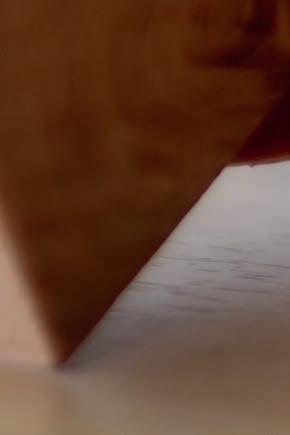





“Gone are the days when creative accounting could sell any story because consumers, investors and regulators are wary of greenwashing.”

The Federal Government’s National Electric Vehicle Strategy brings into focus Australia’s road transport future, but more work is needed to chart a course for the nation’s electrification goals.
By Gavin DennettThe Federal Government has unveiled its fi rst ever National Electric Vehicle Strategy, which lays down a blueprint for Australia’s nationwide transition to EVs. The strategy is designed to increase mass uptake of electric vehicles and sets out three key objectives:
• To increase the supply of a ordable and accessible EVs.


• To establish the resources, systems and infrastructure for rapid EV uptake.


• To encourage increased EV demand throughout Australia.
According to the government, Australia’s appetite for electric vehicles is high, but consumers have been hamstrung by supply and a lack of national policy to encourage manufacturers to increase the volume of cars sent here from overseas. However, the












strategy delivers a national framework that is designed to get more EVs on the road. With just 3.8 per cent of new car sales in Australia comprising EVs – compared to nine per cent worldwide – Australia is lagging the developed world. With the nation’s transport network on track to be Australia’s largest emitting sector by the end of this decade, a rmative action is imperative.

At the heart of the National Electric Vehicle Strategy is a fuel e ciency standard to encourage car manufacturers to supply more EVs to Australia, improve consumer choice and make it easier and cheaper to access popular EV models. The new standard is yet to be designed,





in consultation with industry, but the government has suggested expected restrictions on how much carbon dioxide cars can emit could save motorists $519 a year in fuel costs. The new fuel e ciency standard is expected to come into e ect by the end of 2023.
Minister for Climate Change and Energy
Chris Bowen says Australia and Russia were the only two developed nations in the world
 Illustration: Mahesh Patil/Shutterstock
Illustration: Mahesh Patil/Shutterstock

without fuel e ciency standards, meaning manufacturers have sent high-polluting vehicles here because they can’t be sold elsewhere. On average, new cars in Australia use 40 per cent more fuel than Europe, 20 per cent more than the US, and 15 per cent more than New Zealand.
More than 85 per cent of all cars sold worldwide are subject to fuel e ciency standards and now Australia has the chance to catch up.
“Fuel e ciency standards would require more a ordable electric vehicles to be sent to Australia,” said Minister Bowen at the announcement of the strategy.
“In other countries, there’s a much bigger range of electric vehicles available for people. We want people of all walks of life, regardless of their income, to have the chance to consider buying an electric vehicle.”
With the strategy currently being short on details of impending fuel e ciency standards, the Climate Council has laid out five design priorities to ensure they:
• Set Australia on a strong pathway to a zero-emissions fleet, with a target of all new vehicles sold being zero emissions by 2035 at the latest.
• Align with other car markets such as New Zealand, US and Europe as a minimum so Australia moves up the queue for cleaner, cheaper vehicles.
• Deliver genuine reductions in emissions from new cars sold in Australia, avoiding credits and loopholes that undermine their e ectiveness.
• Are mandatory and legislated, meaning vehicle manufacturers won’t be able to opt out.
• Start as soon as possible because every new vehicle sold today will likely be on the road for at least the next 10 years.
“Australians want cleaner and cheaper vehicles,” says Dr Jennifer Rayner, the Climate Council’s head of advocacy. “Households are currently spending almost $100 a week on fuel bills, which adds to cost-of-living pressures.
“Because Australia doesn’t have fuel e ciency standards, we have become a dumping ground for expensive, polluting, petrol-guzzling vehicles. This is forcing too many Australians to fork out for cars that hurt household budgets, our health and our environment.
“Strong fuel e ciency standards are the key to unlocking supply of the cleanest and cheapest-to-run cars for Australia, including electric ones. The government and industry will be driving with a flat tyre trying to deliver the rest of the National Electric Vehicle Strategy if we don’t get these in place soon.”
The strategy will also support the integration of EVs into work and homes, including initiatives to support battery recycling, infrastructure planning, apartment building design and world-leading training for emergency services workers. This framework will guide governments to work together to provide systems and infrastructure needed to support this early-stage transition.
Not only is the National Electric Vehicle Strategy short on details about what the fuel
e ciency standards will be, it does not include new targets for EV uptake in Australia, with further consultation to be conducted during the next 12 months.
The Climate Council says the strategy’s focus on improving the availability of charging infrastructure and incentivising uptake of the cleanest vehicles is welcome, but fuel e ciency standards should be accompanied by other policies that support and enable the uptake of lower and zero-emissions vehicles.
The climate-change organisation says the Federal Government should go further by reviewing current tax incentives which skew purchases towards heavier and high-emitting vehicles, and supporting people on low incomes to swap older, heavy polluting cars for ones that are cleaner and cheaper to run.
“The Federal Government needs to put the pedal to the metal in delivering strong fuel e ciency standards,” says Dr Rayner. “There are around one million new cars sold in Australia each year so we need to act fast to give drivers more choice and see them start saving.”
Despite the National Electric Vehicle Strategy containing long-term planning omissions that will need to be prioritised on Australia’s path to net zero, Solar Citizens – an independent, community-based organisation that campaigns for renewable energy and clean transport – is hailing the blueprint as it stands as a win for collaboration between government, industry and the community.
“After more than 500 submissions to the consultation process – with the vast majority calling for a fuel e ciency standard – it’s heartening the government
Sydney-based logistics software startup

Adiona Tech has released its “Connected Thinking” electric vehicle report, a data-driven response to the National Electric Vehicle Strategy, which is critical of the Federal Government’s focus on passenger vehicles instead of heavy trucks and commercial fl eets.
The company says its data demonstrates that electrifying 10 small delivery trucks will eliminate as many emissions as 56 households purchasing an EV. According to Adiona Tech, large articulated trucks comprise one per cent of vehicles on
Australian roads, yet produce 15 per cent of all vehicle emissions.
“Australia is already behind every other developed nation on electric vehicles, and while we’re playing catch up, we can’t forget the biggest emitters on the road: freight and transport vehicles,” says Adiona Tech founder and CEO Richard Savoie.
“The National Electric Vehicle Strategy is a start, but we need low-emissions zones yesterday. We need much bigger fi nancial incentives for businesses to switch to more expensive EVs. Current grants barely bridge the gap. They are not sufficient
Photo: Suppliedhas finally got the message it needs,” says Solar Citizens’ clean transport campaigner Ajaya Haikerwal.
“There’s clearly a willingness from the community and industry to fix fuel efficiency standards and get it right as soon as possible to bring more clean car choices for all Australians.
“Australia is already at the back of the global queue when it comes to access to electric vehicles, and we’ve become a dumping ground for crappy, inefficient vehicles that aren’t accepted in other countries.
“We need to join the same queue as the rest of the world, but there’s no point joining at the back or we will simply end up in the same predicament we’ve been in for the past decade. What we have needed for a long time is a world-class standard that is at least as ambitious as Europe or New Zealand – without loopholes or dodgy super credits that create perverse climate outcomes – that gives all Australians a fair go and reduces spending on petrol.”
Solar Citizens analysis shows that if the fuel efficiency standard matches the European Union, Australians could save at least $11 billion in fuel over five years, including $4 billion for regional Australia.
“Our ‘Recharging Australia’ report demonstrates the cost-of-living relief this policy will bring – a whopping $11 billion invested back into the Australian community rather than leaving our shores forever and lining the pockets of foreignowned oil companies,” says Haikerwal.
“We keep hearing the same message from regional communities – ‘Give us the vehicles we want at a fair price point and we’re ready to make the switch.’”
A rapid increase in Australia’s uptake of electric vehicles will place additional strain on the grid, meaning substantial planning for energy infrastructure improvements is required as part of a long-term strategy.
“The Federal Government’s electric vehicle strategy, which includes a new fuel efficiency standard and battery recycling, is very welcome news, but we need to remember our country’s electricity grid and charging infrastructure is currently not sufficiently equipped to handle a significant uptake of electric vehicles,” says Dr Roger Dargaville, deputy director of the Monash Energy Institute at Monash University.
“We are lagging many other countries in terms of charging infrastructure so a lot of work is required to build the required
charging networks. If we rely solely on our traditional energy generation systems and fossil fuel energy, we will not reap the full benefits of increased EV adoption.
“We need investment in the required infrastructure to support EV uptake, including not only charging infrastructure but the development of a smart grid that can handle increased demand for electricity with high penetration of renewables and the creation of policies that incentivise private investment in EV charging stations.”
Dr Dargaville says the Federal Government must prioritise sustainable EV supply chains and support local EV manufacturing.
to change peoples’ minds and change Australia’s roads.
“We cannot transform the national fleet of 20 million vehicles overnight so we need to make decisions that make the biggest difference for the lowest effort first. Frankly, the data shows consumer adoption of EVs should not be Australia’s number one priority; electrifying fleets is by far the most efficient way to reduce vehicle emissions.
“Every battery we put in a truck or van counts for five to 50 households buying an EV, and businesses often have fleets of hundreds of vehicles. Australia must prioritise the electrification of these vehicles that are on the road most, travel the longest distances,
and are the least fuel efficient.”
Other key findings from the “Connected Thinking” report include:
• Articulated trucks travel six times more kilometres than a passenger car annually in Australia, use 40 times more fuel, and produce 50 times more CO2.
• Vehicles in NSW, Victoria and Queensland produce the most CO2 emissions.
• N orthern Territory produces the least CO2 due to having the smallest distance travelled, but it is among the worst states or territories for fuel used per kilometre travelled.
• ACT is the most fuel-efficient state or territory in Australia.
“The government must ensure the production and disposal of EVs are environmentally friendly, with measures in place to reduce the carbon footprint and minimise waste generated during the process,” he says. “It must also consider the potential benefits of supporting a local EV manufacturing capacity. If we rely too heavily on imports, it could affect the cost and availability of EVs in Australia.”
The Electric Vehicle Council will be working with the Federal Government to help establish Australia’s fuel efficiency standard and other policy framework to encourage widespread uptake of EVs.
“We will be working closely with the government as it designs a fuel efficiency standard for passenger and light commercial vehicles,” says Electric Vehicle Council CEO Behyad Jafari. “Australia has a bright and clean electric future just around the corner, but only if we get the policy settings right today.”

“Australia has become a dumping ground for expensive, polluting, petrol-guzzling vehicles.”
On the back of the National Electric Vehicle Strategy, incentives at all levels of government are pushing Australia’s vehicle fleets to electrification.
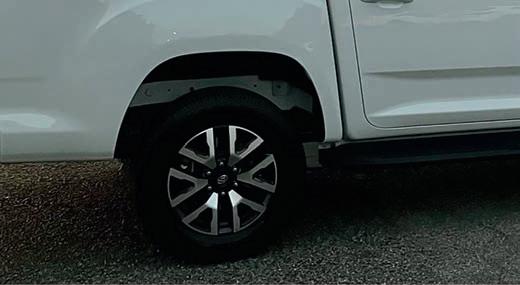
 By Chris Ryan
By Chris Ryan
In the race to electrify its car fleet during the past decade, Australia was left on the grid and lapped by European nations. In 2022, 3.8 per cent of new vehicle purchases in Australia were electric vehicles, whereas 12 per cent of new vehicle registrations in the EU were battery EVs, with Norway leading the field with a whopping 80 per cent. The global proportion of EVs is nine per cent.
On the plus side, Australia’s EV sales are picking up speed, almost doubling from 2021. That number should continue to rise sharply as all levels of government adopt EV-friendly policies.
Councils are converting fleets and embracing charging stations, and state governments o er various tax breaks and subsidies. At the federal level, the Albanese Government has developed the National Electric Vehicle Strategy. While approaches to encourage EV uptake vary, there is fi nally a broad consensus about the importance of the goal to remove petrol-guzzling vehicles from our roads.
In NSW, beyond tax breaks and subsidies for individuals, the EV Fleets Incentive is helping private businesses, not-for-profits and local councils accelerate their transition to EVs at a lesser cost.



Scott Gillespie, CEO of electric vehicle leasing company CarBon, says it is imperative that governments get behind electric vehicles.
“If Australia is going to reach its 2030
“If Australia is to reach its 2030 emissions targets, commercial and fleet EV transition initiatives will be crucial to achieving those goals.”Fleet electrifi cation is a crucial step to greater uptake of EVs in Australia
emissions targets, commercial and fleet EV transition initiatives will be crucial to achieving those goals,” he says. “I think it is important the government supports that pathway to commercialisation, and then it will stand on its own two feet after that.”
CarBon is a car leasing, subscription and rental company helping a range of industries to decarbonise transport and reduce carbon emissions. It was awarded a $632,000 grant through the EV Fleets Incentive program to supply electric vehicles to commercial fleets in NSW. The company will use the funding to deliver 70 Tesla Model 3s and 70 Tesla Model Ys at discounted subscription rates to rideshare partners such as Uber, DiDi and Ola.
Using a subscription model reduces the risk for organisations converting to electric, explains Gillespie.
“It’s about making sure the technology works for them,” he says. “Going into a subscription, if that vehicle hasn’t worked out after six months, they can hand it back with a couple of weeks’ notice.”
The NSW initiative aims to capitalise on the relatively quick turnover of commercial fleets, bolstering EVs on the used car market.
“Something really important is to be able to purchase an EV that’s a few years old at 20 or 30 per cent less than what it is new,” says Gillespie. “It helps overcome that price barrier, making it more a ordable for people to switch to EVs. It’s important to build out that market.”
Gillespie says fuel e ciency standards, which the Federal Government has committed to adopting, will also help solve the EV puzzle.
“A fuel e ciency standard would bring about more vehicles coming to market, which is great,” he says. “We want to see more vehicles come to market because we want to see them across multiple price segments.”
Australian consumers are significantly behind the pack regarding choice of electric vehicles. Drivers in the UK have their pick of more than 25 low-emissions vehicles under $60,000, while Australians have less than 10.
“We’ve got a lot of fleet customers who would love to be taking them up, but they drive [Hyundai] i30s right now, and there’s nothing similar or even close to that price bracket so that’s a barrier,” says Gillespie.
Limitations to charging networks are also a concern.
“A lot of our business customers have
charging infrastructure at their businesses and at home, but when they go to regional areas, they get a bit anxious,” says Gillespie. “With more charger deployment, we should see increased adoption.”

The Federal Government is looking to address drivers’ range anxiety. In April 2023
– as part of the Driving the Nation fund and in partnership with NRMA – it announced $39.3 million in funding to build 117 fast EV charging sites to ensure a fast charger is located approximately every 150km on national highways in Australia.

That national network can’t come soon enough for Gillespie, who sees rapid growing interest in electric vehicles across the nation.
“Right now, we have an electric ute – the LDV eT60 – and a lot of our customers are taking it for a test drive then committing to subscriptions or leases,” he says. “For a lot of people, it’s getting out there and actually having an experience that then gets them committed.”
“We want to see more vehicles come to market and see them across multiple price segments.”
Electric vehicle adoption is now being propelled by software, and many international companies are taking their innovations to the world.
By Julien DeconinckAs electric vehicle adoption ramps up around the world, software is emerging as the key link to mass uptake, with innovations in this space providing solutions to scaling challenges.
From a US$1 billion industry in 2021, EV charging software is forecast to grow to US$25 billion by 2030, making it one of the fastest growing software sectors in the market today, which o ers a huge opportunity for value creation.

Electric vehicles are set to revolutionise the automobile industry, however a full transition to EVs requires the overcoming of several critical challenges. The fi rst relates to infrastructure and interoperability.

While the number of electric vehicle charging points is growing globally, it is currently insu cient to meet demands of many EV drivers, who still must plan their journeys, particularly long distance ones. Range anxiety remains a major stumbling block for many willing consumers.
As the EV market grows, it will strain the grid. According to some estimates, 1.1 EV chargers will be needed for every EV car. This could increase peak electricity demand on local grids by 15-50 per cent, requiring expensive upgrades to accommodate increased demand.
The interoperability of di erent EV charging systems also remains a major issue. Currently, this scenario causes a problem of overnight charging for EV owners who lack o -street parking.
Having varying protocols means di erent standards/levels of device management, transaction handling, security and smart charging functionalities.
New protocols such as the Open Charge Point Protocol (OCPP) and communication standards such as ISO 15118 are now in place but will need continuous co-development by all stakeholders to increase compatibility between di erent charging stations and management systems.
The second key challenge is equipment and maintenance costs because EV charging hardware remains expensive, including installation.
The fi nal challenge relates to the length of time and cost of EV charging, which is more complex than refuelling a petrol car. Some charging stations provide a full charge in as little as an hour – and an 80 per cent charge in as little as 20 minutes – while others require several hours.
Overnight charging is often available, but the length of time required can vary depending on the car model and
Photo: myphotobank.com.au/Shutterstockstation type. The cost of charging also varies depending on vehicle type, location and specific charging stations, as well as associated fees.
The evolution of charging technologies is following a pattern of innovation that improves performance and commoditises hardware, meaning EV equipment costs and charging time will rapidly drop in coming years. Therefore, software innovation becomes the real enabler of EV scaling by addressing many of the industry’s key challenges.
On the issue of EV charging infrastructure availability and managing its impact on the power grid, there are already many companies around the world addressing this, including PredictEV – Volta Charging’s proprietary network planning software – which uses machine learning to predict current and future EV charging needs,

from infrastructure load requirements to site-level specifics such as optimal locations.
For grid management, companies such as London-based Kaluza have an advanced platform that helps utilities manage the impact of EV charging on electricity grid demand by providing an intelligent, distributed system that can monitor, control and optimise charging. Similarly, WeaveGrid’s data-driven platform ensures the grid can accommodate EVs safely by helping utilities in the US find EV drivers, analyse and gather insights on charging patterns, enrol them in managed charging programs and EV-specific rates, and incentivise beneficial charging habits.
Many software companies around the world are improving return on investment of EV charging infrastructure through real-time monitoring and improving demand flexibility to reduce charging costs.
In Europe, Mobility House has developed its ChargePilot platform that provides B2C and B2B owners of EV charging stations with a management system for monitoring, maintenance, schedule-based load management and billing.

Denmark-based Monta has EV charging management software that serves drivers, companies, cities and grids with one integrated software solution, making it easy for businesses to maximise efficiency of their EV charging infrastructure through detailed analytics, real-time monitoring, dynamic pricing capabilities and automatic billing and payment.
EV fleet management is a growing area of the sector, with companies Vulog, from France, and Autofleet, from Israel, being leaders in this space. Vulog’s integrated software and data solutions power shared mobility services such as car-sharing, ride-sharing and bike-sharing, while Autofleet’s cloud-based software platform helps businesses manage fleet vehicle maintenance, driver safety, fuel monitoring and route optimisation.
As electric vehicle adoption upscales, systematic maintenance of EV infrastructure will become crucial. While EV charger monitoring exists today, the concept of smart, “self-healing” EV chargers is not widely embraced. This capability will be software-led, as evidenced by the smartphone market where your device learns from your daily charging habits to improve the lifespan of your battery.
Companies such as Israel’s Driivz claim
they can already remotely address up to 80 per cent of operational problems related to EV chargers by leveraging automated self-healing algorithms. As a result, issues with EV infrastructure can be automatically diagnosed and proactively fixed, which maximises network availability and stability.
From a user point of view, EVs need to be charged more frequently than petrol vehicles are filled. Instead of the typical 40 annual fuelling sessions, an EV may need 500 or more yearly charging sessions. The nature of these sessions is different, and software helps take advantage of those daily interactions to upsell users various services. Long-term, expect the emergence of super-apps from the EV charging software sector, which will fuel significant growth.
EV charging software will be instrumental in the transition towards renewable energy. According to Finnish EV charging services company Virta Global, there will be 140-240 million electric vehicles globally by 2030, which means there will be at least 140 million batteries with an aggregated storage capacity of 7TWh. EVs will provide crucial power storage to support the generation of renewable energy, using vehicle-to-grid (V2G) technology.
A recent whitepaper from Kaluza shows a typical EV sits parked 90 per cent of the time with a battery capable of storing 40kWh of energy – enough to power an average modern home for two days. Unlocking bidirectional charging will enable a more affordable, highly resilient energy transition.
EV charging software is one of the fastest growing and potentially one of the largest new software sectors globally. As the complexity and scale of EV charging networks increases, EV charging software looks set to become more than a US$50 billion market, helping drive the global economy towards net zero.

Australia may supply more than half of the world’s lithium, but does it have the smarts to engineer real value out of the mineral? As battery storage is incorporated into power grids to balance intermittent generation from solar and wind, and as electric vehicles replace the petrol-powered variety, research and development (R&D) teams and entrepreneurs are working hard to get a slice of the action.
The Supercharge Australia Awards, a competition to attract talent in the local lithium sector, is the fi rst partnership project between local renewables incubator EnergyLab and global equivalent New Energy Nexus. The intent is to accelerate the lithium value chain in Australia,

and the fi rst cohort of 11 contenders included an eclectic electric bunch.
First place in the inaugural event went to Renewable Metals, which is looking to commercialise an alkali-based recycling process that it says recovers up to 95 per cent of materials in batteries, including lithium, nickel, cobalt, copper and manganese.
“It’s a bit of a paradigm shift,” Renewable Metals CEO Luan Atkinson tells EcoGeneration. “Acid is a bit like using a sledgehammer because it will dissolve everything.
“That’s good on one hand, but it creates impurities you need to take out afterwards, and then you add more chemicals and create byproducts. Alkalis are very selective for
the metals we are trying to extract and operate at a lower temperature.”
Chemicals are recycled throughout the process to reduce capital and operating costs, whereas competing acid-based technologies involve more steps and produce large volumes of sodium sulphate, a low-value byproduct.
Australia has a record for using alkali-based processes in nickel refi neries, whereas acid is more commonly used around the world.
“That was a genesis of the idea,” says Atkinson, whose colleagues have experience using alkalis in refi ning processes. “But now we’re not talking about a single metal, but up to six metals.”
The team has been testing the process on
Photo: Supplied collaboration between EnergyLab and New Energy Nexus is seeking innovative battery ideas as the world adapts to power storage.end-of-life batteries, rather than production scrap, and has enough of them stacked away to see it through its next two upscales.
“Because we are in an R&D phase, we are not looking for commercial quantities,” she says.
A pilot study in late 2022 saw recovered samples at marketable intermediate quality.
“We can produce battery-grade products,” says Atkinson. “There will be lots of places the product can go.”
For example, a buyer might choose to send recovered lithium to be further refined at specialised facilities. However, when Perth-based Renewable Metals reaches full commercial operation, the plan is to produce battery-grade products inhouse.
The success of any recycler is determined by two vital factors: it must be able to get its hands on what is to be recycled, and it must be able to sell the materials it has recovered. Because of potential supply chain shortages and the focus on critical minerals, Atkinson is confident Renewable Metals will find buyers for the materials it produces to the right specifications.
“But you need to get the batteries coming in,” she says.
To that end, the company has shown battery manufacturers and suppliers what it is up to in the hopes of tapping the growing volume of powerpacks that are charging and discharging day and night around Australia.

“Everyone is very keen to have a complete recycling solution in Australia,” says Atkinson. “At the moment, it is a halfway step where batteries are pre-processed to black mass and that is exported for extraction of minerals.”
The company has received funding towards a feasibility study for a plant from the NSW Critical Minerals and High-Tech Metals Activation Fund. Atkinson is also hopeful Australian rebates for recycling and stewardship will be implemented to encourage consumers to do the right thing. “There is also a very big social licence to operate,” she says. “People will be looking for safe and responsible ways to recycle batteries.”
The Supercharge Australia competition
is open to any business working to enhance the economics of lithium tech – from exploration and extraction, to recycling and battery manufacturing, and any of the many implementation phases along the way. The field of expertise in lithium is broad, with finalists in the 2023 Supercharge Australia Awards ranging from development in materials to replacing polluting powerhouses in working vehicles.
Second place in the competition was awarded to Sicona Battery Technologies, which is working towards commercialisation of materials that can almost double the capacity of graphite anodes in lithium batteries, using technology developed at the University of Wollongong in NSW.
In third place, Roev wants to convert diesel utes to electric, where it estimates a cut to emissions of more than 100 tonnes during a vehicle’s lifespan. The startup is currently targeting top-selling Toyota Hilux and Ford Ranger vehicles.

Fourth spot went to Vaulta, a Brisbanebased company that turns out a recyclable and repairable lithium battery solution.
Any entrepreneurs or startups seeking to compete in the 2024 Supercharge Australia Innovation Challenge should contact Kirk McDonald, the event’s project manager, at kirk.mcdonald@newenergynexus.com. Good luck!
“There is a very big social licence to operate. People will be looking for safe and responsible ways to recycle batteries.”The Renewable Metals pilot plant in Belmont, Western Australia.
The clean energy sector will come together on 18-19 July for Energy Next at ICC Sydney.
The clean energy industry will congregate in Sydney in July 2023 for the annual two-day Energy Next event. Held on 18-19 July at ICC Sydney in Darling Harbour, on the edge of the city’s CBD, free-to-attend Energy Next will offer people working in the renewables sector the opportunity to meet with leading suppliers, discover the latest clean energy innovation and technologies, and connect thought leaders, businesses and organisations to explore Australia’s clean energy future.
Energy Next will be co-located with the Clean Energy Council’s Australian Clean Energy Summit, forming the most comprehensive renewables event in NSW, generating conversations and connections to improve Australia’s clean energy generation and adoption.
Powered by All-Energy Australia, in partnership with the Clean Energy Council, Energy Next’s exhibition will focus on the latest renewable energy and energy management technologies and solutions from leading suppliers across solar, energy storage, electric vehicles and energy monitoring software.
“The combination of Energy Next with the Australian Clean Energy Summit offers
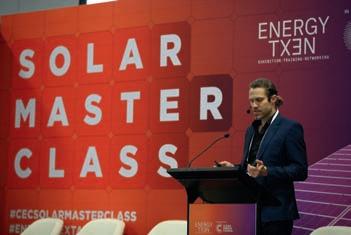
significant added value by giving attendees first-hand exposure to the technologies and innovations driving Australia’s clean energy transition,” says Clean Energy Council chief executive Kane Thornton.
“It will also help to increase collaboration across the industry, giving technology suppliers the opportunity to create connections and explore opportunities with the industry’s most senior executives and decision-makers.
“The Clean Energy Council is delighted to welcome Energy Next to the Australian Clean Energy Summit and is looking forward to a fantastic event in July.”
Energy Next will also host the Clean Energy Council’s Solar Masterclass, a one-stop shop for solar installers to seek expert advice on some of the major design and installation issues facing the industry. Installers and designers will also be able to earn CPD points and access the latest updates on standards and compliance.
Visitors to Energy Next will also have free access to technical sessions with expert speakers discussing the latest technical issues and areas of growth for the industry across the themes of PV innovation, electric vehicles, digitisation, hydrogen, energy data, offshore wind, microgrids and storage.
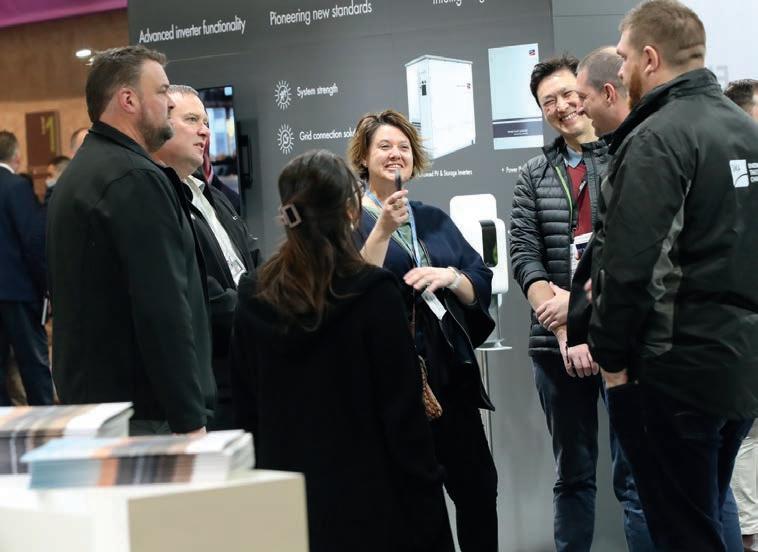
“Energy Next is strategically positioned to meet the needs of the NSW clean energy market and will serve as a critical platform for industry leaders to engage with suppliers, share insights with peers and stay informed of the latest industry developments,” says Energy Next portfolio director Robby Clark.
“We consistently hear of how quickly things are moving in the clean energy space. The Energy Next agenda showcases the latest developments, whether it’s the use of AI in predicting issues in assets and the grid; getting ahead of the risks in large-scale battery installations; new innovations in solar PV materials; and giving visitors information about the most up-to-date developments in the clean energy space.
“We’re honoured to partner with the Clean Energy Council to bring this event to fruition and to contribute to the growth and sustainability of NSW’s clean energy industry.”
EcoGeneration is also an Energy Next partner and will be in attendance with a stand on the expo floor.
Doors will be open for both days of the event from 9am to 5pm. For more information, updates and to register for Energy Next, visit energynext.com.au.

Tasmania has one of the lowest uptakes of solar in Australia, with just 18 per cent of homes fitted with PV systems. However, solar energy solution power provider Qcells is addressing low residential PV adoption with the state’s first fully integrated solar, battery and energy plan.
Tasmanian Labor energy spokesperson Dean Winter recently warned residents that the dramatic energy price hikes experienced in Victoria could be replicated on the Apple Isle, and that average household energy expenses could rise by around $500 per bill during the next financial year.
However, backed by rebates available through the Federal Government’s small-scale technology certificates program – the average solar rebate in Tasmania is $1875 for a 5kW solar system – the Qcells package is designed to give Tasmanians electricity independence
with integrated end-to-end solar panel, battery and energy plans.
The plans include a 15-year battery warranty and fixed monthly costs which can be spread across a 10-year period, with local technicians available for consumer support.
“Tasmanians are defined by their
resilience and independence, and the way they power their homes should reflect that,” says Mick Fell, general manager, commercial operations, Qcells Australia.
“It makes sense for us to offer our all-inclusive energy solution that will deliver Tasmanians bill savings and energy independence.”
Fronius International has achieved a high-efficiency rating for two of its hybrid inverters in the annual Energy Storage Inspection by the University of Applied Sciences in Berlin, Germany.

The European-manufactured Fronius Primo GEN24 6.0 Plus and the Fronius Symo GEN24 10.0 Plus hybrid inverters received an energy efficiency rating of “A” in the 5kW and 10kW categories, respectively.
The annual Energy Storage Inspection compares residential photovoltaic storage systems and provides installers and customers with an independent measure of products on the market.

The 2023 assessment saw 18 energy storage systems from 11 manufacturers receive a System Performance Index (SPI) rating.
High-efficiency systems are indicative of low energy loss, which delivers higher yields and a shorter payback period.
“Fronius GEN24 Plus brings the power of the sun from day into night with the highest degree of efficiency, making best use of available resources,” says Martin Hackl, global director, business unit solar energy, Fronius International.
The Primo GEN24 6.0 Plus, together with the BYD Battery-Box Premium HVS 7.7, achieved an SPI of 92.6 per cent. The Symo GEN24 10.0 Plus with BYD Battery-Box Premium HVS 10.2 produced an SPI of 95.4 per cent.
Fronius International — a family-owned, Austrian-based company with 29GW of installed inverters worldwide — credits its Multi Flow Technology as a major contributor to the hybrid inverters’ high-efficiency rating in the Berlin university’s assessment. It enables the intelligent management of energy flows, permits simultaneous current flows in all directions, and AC and DC coupling of battery storage.
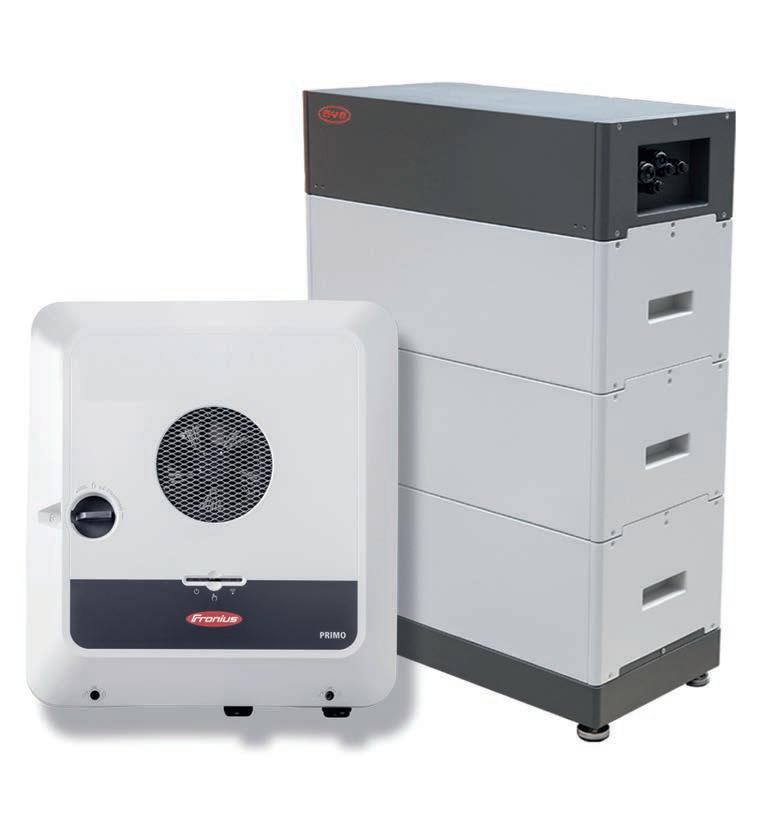






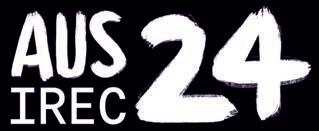

The Commonwealth Bank of Australia (CBA) has formed a new partnership with the Clean Energy Finance Corporation (CEFC) to offer loan discounts to residential customers to improve energy efficiency in new and renovated 7-star homes, including for technologies such as battery-ready solar panels, electrification and heat pump water systems.
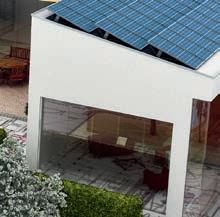

Under the CBA’s Green Home Offer, CEFC is committing $125 million to help homeowners who build or renovate dwellings to the Green Star Home Standard — as set by the Green Building Council of Australia — that meet high-energy efficiency standards.
Under the Green Home Offer, which was initially introduced by CBA in 2022, borrowers are eligible for a discounted interest rate on entire home loans as opposed to just sustainable renovations.
“A discounted Green Home Offer is



The Victorian Government is embarking on a program to upskill the state’s plumbing industry to meet the growing demand for household energy-efficient heat pumps and solar hot water systems.
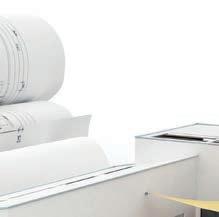
The new training program — which underwent a successful pilot in 2022 — is being delivered in partnership with the Plumbing Industry Climate Action Centre (PICAC) and is part of Solar Victoria’s $11 million training and workforce development program, which aims to grow Victoria’s clean energy workforce.

Around 200 Victorian plumbers and
a powerful tool to drive down emissions, reduce energy use and create homes that are fit for the future,” says CEFC CEO Ian Learmonth.
“The CEFC has been one of the earliest backers of green home initiatives, with this latest investment bringing our total commitment to $350 million since 2020.”
The CEFC fi nance supports a discount of up to 0.18 per cent per annum on standard variable rates during a five-year period, equally split between the CEFC and CBA.
“It’s great to see the CEFC — the world’s biggest green bank — make smart partnerships to incentivise energy efficient homes,” says Minister for Climate Change and Energy Chris Bowen.
“Powering homes with battery-ready solar PV, as well as installing better insulation and windows, will help households cut power bills and emissions.”

CBA has also introduced green discounts
for borrowers taking out personal loans to make sustainable purchases such as electric vehicles, solar panels and home batteries.

These discounts add to the new CBA Green Loan, a low secured fixed-interest-rate loan for borrowers to fund up to $20,000 in renewables to be repaid over 10 years.
“While we expect all residential homes to be built to these standards during the coming years as we move towards a net-zero future, our Green Home Offer encourages customers to take steps now to protect the environment and their home,” says CBA executive general manager for home buying Michael Baumann.

“It represents the bank’s commitment to rewarding new and existing customers taking actionable steps to reduce their environmental footprint.”
transition to a clean energy future,” says Victorian Minister for Energy and Resources Lily D’Ambrosio.
“Our hot water rebate is just one of the ways we are helping Victorians save money on their energy bills and reduce emissions.”
Under the $1.3 billion Solar Homes Program, Victorians can claim a $1000 rebate to replace their hot water systems with solar hot water or energy efficient heat pump systems.
The number of households which claimed this rebate quadrupled in 2022.
fourth-year plumbing apprentices have registered for the course, which will run until November 2023.
“Victoria’s solar and renewable energy sector needs plumbing professionals with the right skills as demand for renewable energy installations increase, as we




Hot water is the second-largest consumer of household energy, and switching to solar or a heat pump can save households up to $400 a year on electricity bills.
The Solar Homes Program has cut Victoria’s carbon emissions by 1.7 million tonnes since commencing in 2018.
As of December 2022, a series of exciting new Nationally Recognised Renewable Training Units were released. A new pathway now exists for sales, administration and support roles across our industry to upskill and become accredited. At New Energy Training , we’re excited to be providing courses for this new pathway with no prior qualifications needed.

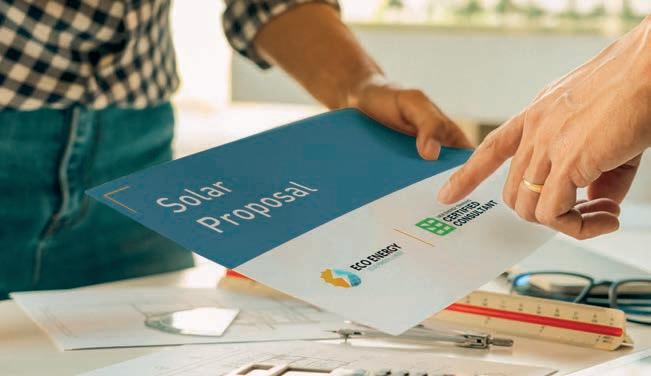

If you’re interested in learning more about this new pathway go to newenergytraining.com.au





Did you know non-electricians can become accredited solar & battery designers?

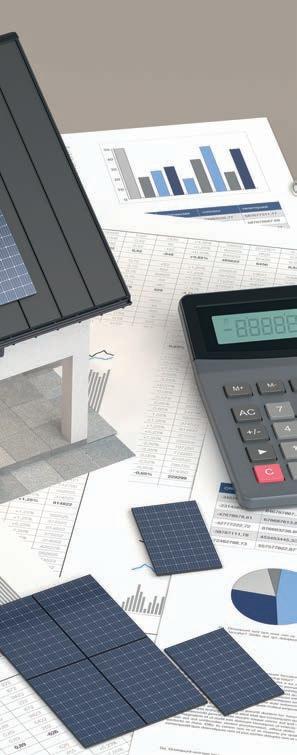

When launching a solar installation business, it is imperative to have all legal documents in place before setting foot on a rooftop.
By Robert ChenClean energy is becoming increasingly important to many Australian households and businesses. If you have previously worked in a related industry, you may be looking to capitalise on the trend and start a solar installation business. If so, it is important you establish your new business with sound legal documents in place. Doing so allows you to clearly state how your commercial relationships with suppliers and consumers will operate; limits your liability; and
reduces the risk of a dispute arising. This article will outline what licences you need to start your business and what to look for in your terms of trade and supply agreement.
Before you start your business, make sure you are licensed to install solar panels. Each state has di erent licensing requirements. For example, in NSW you must hold building and electrical contractor licences to install solar panels on the roof of a residential property or other premises. A building contractor may enter into contracts to install solar panels, but somebody holding an electrical licence must also be hired under the contract. This person must carry out all required electrical wiring work. Regardless of whether the premises are residential,
commercial or industrial, it is illegal to conduct electrical wiring work without an electrical contractor licence or an electrical qualified supervisor certificate, or without the supervision of the holder of an electrical qualified supervisor certificate.
If you plan to connect premises to the electricity distribution network, you must meet further qualification requirements and be an accredited service provider.
Once you have confi rmed you meet your state’s licensing requirements, you should prepare a business plan. You will then need to draft your terms of trade. These terms outline the terms and conditions under which you will install the solar panels. You will need to enter into contracts outlining these terms with your clients.
Residential building work is governed by different laws in each state so you may need to prepare separate sets of terms if you are installing solar panels at both residential and commercial premises.
In NSW, there are mandatory requirements for what you should include in a residential building contract. These requirements depend on the price of the contract. If the residential building work is worth between $5000 and $20,000, you will need a small jobs contract. If the work is worth more than $20,000, it requires a more detailed home-building contract.
Your terms should clearly outline the nature of the goods and services you are providing. In this case, the goods will be the solar panels, assuming you are also selling these
to the client, while the services will be the installation of the solar panels. If this is left unclear, the goods and services you provide might not meet your clients’ expectations. If this happens, your clients may request that you provide additional goods and services at no further cost.
Warranties are assurances that you should try to obtain from your client. For example, you will want to ensure the premises is safe for your workers; the client has the relevant

permissions to have the solar panels installed; and the client is the lawful owner of the premises or has the permission of the lawful owner to have the solar panels installed.
In most cases, installation of the solar panels will take place as planned. However, you should set out what happens if one party wants to terminate the terms. The termination clause should outline when a party may terminate the terms, and what the consequences will be.
For example, if your client terminates the contract, you will need to know whether you can retrieve the solar panels from the premises and charge your client additional costs of doing so.
Most owners of a solar installation business will need to source their solar panels from a supplier. Finding a good supplier is crucial and they will directly affect the reputation of your business.
Once you have found a supplier you are happy with, you will enter into a supply agreement with them. Some of the key clauses to consider in your agreement are outlined below.
You should negotiate whether the agreement will be exclusive (you are the only solar installation business that can sell these solar panels in the area) or non-exclusive (the supplier can sell to your competitors).
This is a key clause. Make sure you discuss it with your supplier before having any contracts drawn up.
Getting paid is important to all business owners. Your terms should clearly set out how payment will work. Consider what price is due upfront; what price is due during the course of the project; and when any further costs are due.
It should also be clear what happens if clients fail to make their payments. For example, if payment is not made, you could cease to provide the goods and services until the amount is paid. You could also charge interest on any outstanding amounts.
A key concern will be what goods you are getting and for what price. You may need to order a wide range of goods from your supplier. Goods and prices may also vary from order to order.
If you have negotiated a good price for the goods, it is important to ensure your agreement specifically indicates this is the agreed price.
“Finding a good supplier will directly affect the reputation of your business. Once you have found a supplier, you will enter into a supply agreement.”
Receiving defective solar panels from your supplier could damage your business. It is very important your supply agreement addresses what will happen if the supplied goods are defective.
Usually, you must notify the supplier that the goods are defective within a set time. The supplier may then resupply the goods or provide a refund.
You should also ensure the supplier provides warranties assuring you of the quality of the goods they are supplying. For example, the supply agreement should expressly provide warranties relating to the quality of the goods; whether the goods are fit for purpose; and whether the goods are of merchantable quality (generally of a suitable quality).

It is important these warranties are set out in writing so you can rely on them if the goods do not meet such criteria.

A forecast clause requires you to provide the supplier with an estimate of how many solar panels you will need in the future. This can work in your favour as the supplier will be aware of how many solar panels you are likely to need. The supplier can then ensure they have enough stock.
Be very clear what happens after you have placed an order with your supplier. Your order should set out:
• How many solar panels or parts are being ordered.
• What the specifications of the model are.
• Where the solar panels are being delivered to.
• When the solar panels are being delivered.
Starting your own solar installation business may be a profitable decision. Before you start your business, ensure:

• You are licensed to carry out the work.
• You have found an appropriate supplier.
• You have clients who want your services. When you start engaging suppliers and clients, you should already have your business’s terms of trade drafted and your supplier agreement formalised in a contract. This ensures that how your business relationships work is clear to all parties.
If you need help starting your solar installation business, LegalVision’s experienced contract lawyers can assist as part of a membership. For a low monthly fee, you will have unlimited access to lawyers. Call LegalVision on 1300 544 755 or visit legalvision.com.au.
“ When engaging suppliers and clients, have your business’s terms of trade drafted and your supplier agreement formalised.”It is important you establish your solar business with sound legal documents in place
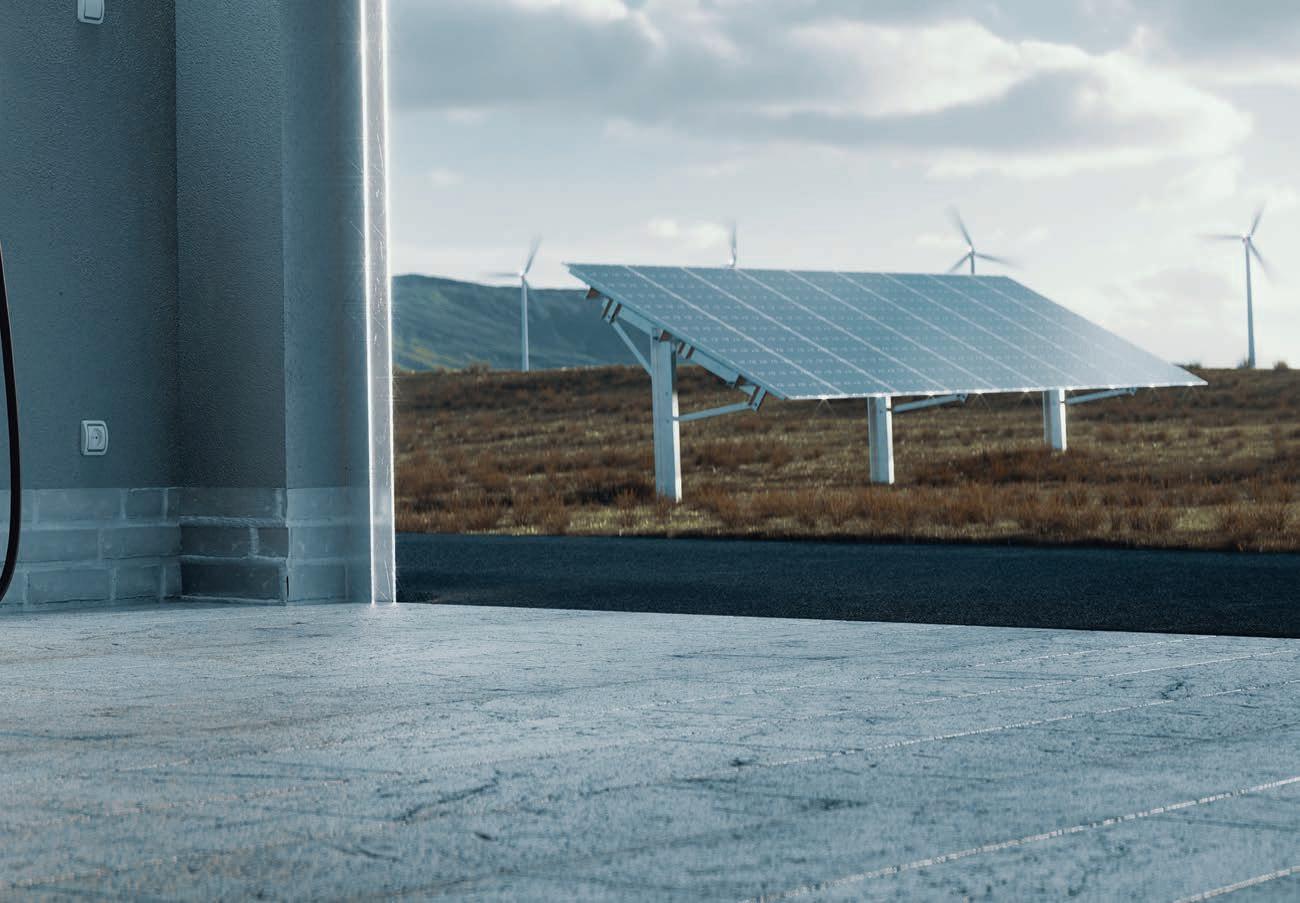






Australia may be cooling down as winter approaches, but the nation is still basking from the glow of the recent record summer of solar, in which small-scale rooftop PV supplied more electricity than brown coal.
In the summer of 2022-2023, rooftop solar provided a record 14 per cent of Australia’s energy needs, dispatching more electricity to the grid than all other
renewable sources, including grid-scale wind farms and solar farms.
“There is no doubt with inflation and cost-of-living pressures, people are turning to rooftop solar in record numbers,” says Clean Energy Council chief executive Kane Thornton.
“Thousands of Australians are switching to rooftop solar and seeing the benefits to their hip pockets and the environment.

In fact, payback periods for rooftop solar are now at near record-low levels, at 3.4 years for a 7kW system.
“We’re seeing a fundamental shift – consumers are becoming energy generators, making their own clean energy, reducing their bills and taking on the electricity companies.”
Making this summer PV figure even more impressive is it only measures the energy that entered the grid.
“Even more clean, low-cost generation was produced and used by households, taking pressure off our strained system,” says Thornton.
The total output for the 2022-2023
In 2022, installation of household batteries in Australia smashed all previous records. A recently released report from energy industry consultancy SunWiz reveals installations of batteries linked to solar systems grew 55 per cent in 2022 compared to 2021.
The “2023 SunWiz Annual Australian Battery Market Report” is a compilation of data from government, industry and the Australian Energy Market Operator.
According to analysis from SunWiz, 47,100 residential energy storage systems (ESS) were installed in 2022, taking Australia’s cumulative tally of ESS to 1920MWh — enough energy storage to meet the daily electricity needs of 128,000 households.
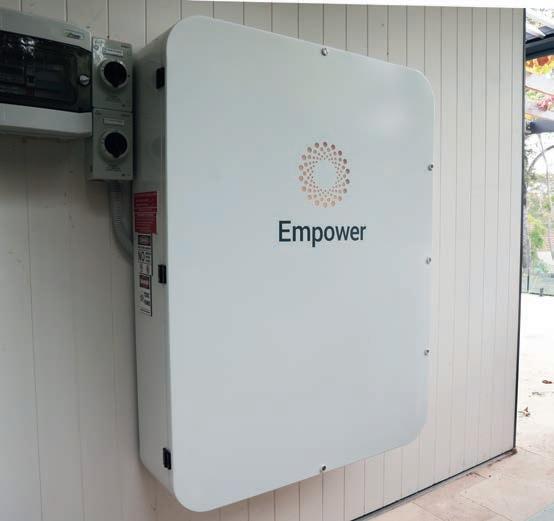
“Australians responded to Russia’s invasion of Ukraine, COVID-19, the energy price crisis and worsening climate-fuelled disasters by installing home solar systems linked to batteries in an effort to increase their energy independence, resilience and self-reliance,” says SunWiz managing director Warwick Johnston.
“With skyrocketing electricity prices, this data shows Australian households and businesses are taking back power from the energy system by turning to cheaper, renewable sources of energy.”
According to the report, there was one battery energy storage system installed for every seven solar power systems in Australia in 2022. This fi gure is up from one in 12 in 2021.
“The cumulative total of Australian homes and businesses with solar and batteries has hit 180,000,” says Johnston. “That’s still a long way off the more than three million homes with solar panels, but many solar households are seeing the light — with one-third of battery installations being retrofitted to existing solar systems.”
Other noteworthy fi ndings from the SunWiz report include:



• Every Australian state and territory, except South Australia, installed a record number of batteries in 2022.
• Victoria and NSW installed the greatest volume of energy storage systems in 2022, with both states incredibly installing the exact same number of batteries (12,717) to each capture 27 per cent of Australia’s ESS market share.
• Despite not surpassing previous levels, South Australia leads in per-household uptake of batteries.
• ACT and Tasmania were Australia’s highest growth markets in 2022, installing four times more batteries than in 2021 — 2355 and 942, respectively.
The “2023 SunWiz Annual Australian Battery Market Report” also reveals significant market sub-segment trends, including:
• One in three ESS are retrofitted to an existing PV system. This is higher in South Australia and NSW.
• 20.5 per cent of PV systems installed in 2022 were at a site that had an existing PV system, with many upgrading to a battery.
• The typical ESS customer will install a larger battery system when retrofitting to an existing PV system.
• The typical customer when purchasing a solar and storage system buys a smaller battery than if they were retrofitting.
• The typical customer will install a larger PV system when installing a battery, compared to a non-ESS PV installation.

“Consumers are becoming energy generators, making clean energy, reducing their bills and taking on electricity companies.”
summer’s rooftop solar was 8046GWh, up 19.5 per cent on the same period the previous year.
Across the summer, NSW boasted the greatest improvement, with a 30.5 per cent rise in GWh production compared to the same period in 2021-2022. This was followed by South Australia with a rise of 18.5 per cent, although that state made the most significant contribution to overall solar generation in Australia, with 27.6 per cent.
The record summer of solar came on the back of a significant year for small-scale PV in 2022.
In the Clean Energy Council’s “Clean Energy Australia Report”, released in April 2023, it outlines how 310,352 new rooftop solar systems – accounting for 2.7GW of capacity – was added to the grid in 2022, nearly the same capacity as the coalfi red Eraring Power Station in Lake Macquarie, NSW.
In 2022, rooftop solar accounted for 25.8 per cent of total Australian renewable energy generation.
“Rooftop solar is playing a massive role in decarbonising the Australian energy grid and putting us on the path to 82 per cent renewable energy by 2030,” says Thornton.

“While much of the political and big policy debates are taking place for other renewable energy industries – all of which are vitally important – rooftop solar has been doing a lot of the heavy lifting.”
Approximately 3.4 million Australian homes enjoy the benefits of rooftop solar – there are around 2.5 solar panels installed for every Australian – with the average solar
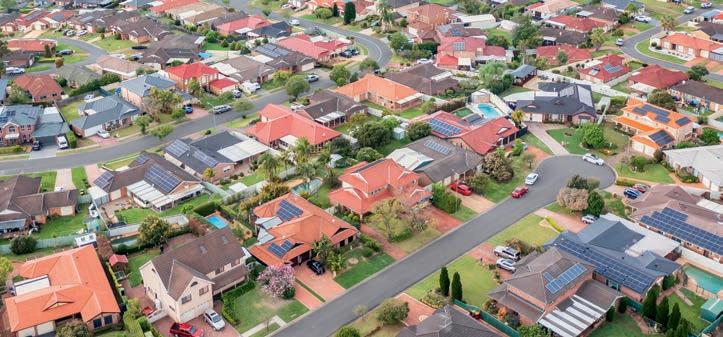
system size increasing year-on-year, rising from 8.79kW in 2021 to 8.84kW in 2022.
“There were challenges for the industry in 2022, but our workforce showed its resilience in the face of higher polysilicon prices, a reduction in subsidies and other supply chain issues,” says Thornton.
“The number of Clean Energy Councilaccredited designers and installers also continued to grow for the seventh year running, with 8988 individuals demonstrating industry best practice standards, producing safe, reliable systems and meeting customer expectations.
“If Australia is chasing a target of 82 per cent renewable energy generation by 2030, the good news is rooftop solar is adding around 3.5TWh per year. The challenge is to maintain this pace right through to 2030.

“Low-cost renewable power and energy storage will ultimately ease cost-of-living pressures and help set up Australia for a more prosperous future with greater energy security.”
The Clean Energy Council has also released a list of Australia’s top postcodes for rooftop solar in 2022, based on
Clean Energy Regulator data. The best performed regions in each state were:
• NSW: Lismore.
• Queensland: Bundaberg.
• South Australia: Salisbury.
• Victoria: Hoppers Crossing.
• Tasmania: Blackstone Heights.
• Western Australia: Mandurah.
Energy industry consultancy SunWiz released its “2023 Annual SunWiz Australian PV Report” in early 2023, which shows the nation’s overall solar industry also enjoyed record peaks in a stellar 2022.
According to the report, the amount of new solar power installed in Australia in 2022 was 5.3GW – a 20 per cent rise of installed capacity in just one year.
Much of the credit for the sharp growth in total solar was due to the commencement of operations of three solar farms, each exceeding 200MW in scale: Western Downs Green Power Hub and Woolooga Solar Farm, both in Queensland, and Port Augusta Renewable Energy Park in South Australia.
“Australia should be proud of its world-leading solar uptake,” says SunWiz managing director Warwick Johnston. “Installing solar power continues to be a smart way to o set power bills and combat the e ects of high inflation upon household budgets. Solar power is now one of the nation’s largest energy sources.”
In its report, SunWiz notes the volume of solar deployed in 2022 was only two per cent higher than in 2021 – buoyed by large solar farms coming online – with a slow start to the year contributing to a downturn in commercial and residential installs, but the second half of the year redeemed the early months with significant growth.
The slow start to 2022 is attributed to people shifting attention away from home improvement projects following the lifting of COVID-19 restrictions, however the spike in electricity prices saw interest in rooftop solar installations resume from midyear onwards.
This record year for solar farms o set an overall contraction in rooftop PV, meaning 2022 wound up with the market being practically steady – although the two per cent increase in total deployment enables the industry to claim 2022 as a record year.
However, with the total volume of solar farms under construction easing, 2023 will almost certainly be a year of contraction in the sector, meaning more work needs to be done.
“Rooftop solar is playing a massive role in decarbonising the Australian energy grid.”SunWiz managing director Warwick Johnston






















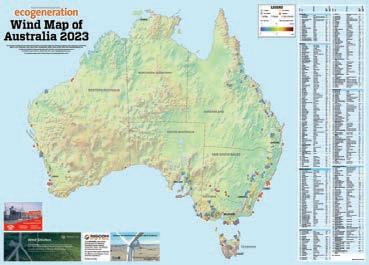

























It is easy to understand why Australian Standards feel like a burden for some people. The rapid pace of technological innovation in the PV and battery space results in regular changes to compliance requirements. Add to this the fact a simple installation may encompass the requirements of three to four Australian Standards and it is a lot to navigate, especially when your days are spent on the tools and your evenings are spent quoting and invoicing.
Having an enhanced understanding of the process of standards development and implementation can help installers leverage them to their advantage and better understand the benefits they provide.
Here are the key elements that go into an Australian Standard.
The first step to developing a better understanding lies in the intention and development process of Australian Standards. While we have discussed this process in EcoGeneration before, there are two important principles installers should consider: Net Benefit and Consensus.
Standards Australia defines Net Benefit as “having an overall positive impact on relevant communities”, meaning the benefits of the requirements of the standard must outweigh any negative impacts they impose. The criteria by which Net Benefit is measured is public health and safety; social and community impact; environmental impact; competition; and economic impact.
Consensus is a central concept demonstrated at several stages throughout the development of a standard. It ensures content of the standard is decided by agreement and common consent. Two examples of ensuring industry consensus are:
• The process by which participants of the technical committee are nominated by key industry stakeholders.
• The public comment period, in which the public is afforded the opportunity to provide feedback on a proposed draft prior to its publication.
Because electricity is a force that can injure or kill, standards afford protection to the end users of electrical systems, and those who install, inspect and maintain them. Requirements such as using residual current devices (RCD) for additional protection make electrical installations significantly safer and can prevent electrocution in the event of someone experiencing an electric shock.
Having common requirements for all electrical installations also provides a level of predictability for licensed electrical workers. When interacting with an electrical installation, Australian Standards allow for basic principles to be assumed about how the installation operates, how electrical equipment and wiring has been installed, and the nature and potential causes of any faults.
Without Australian Standards, different
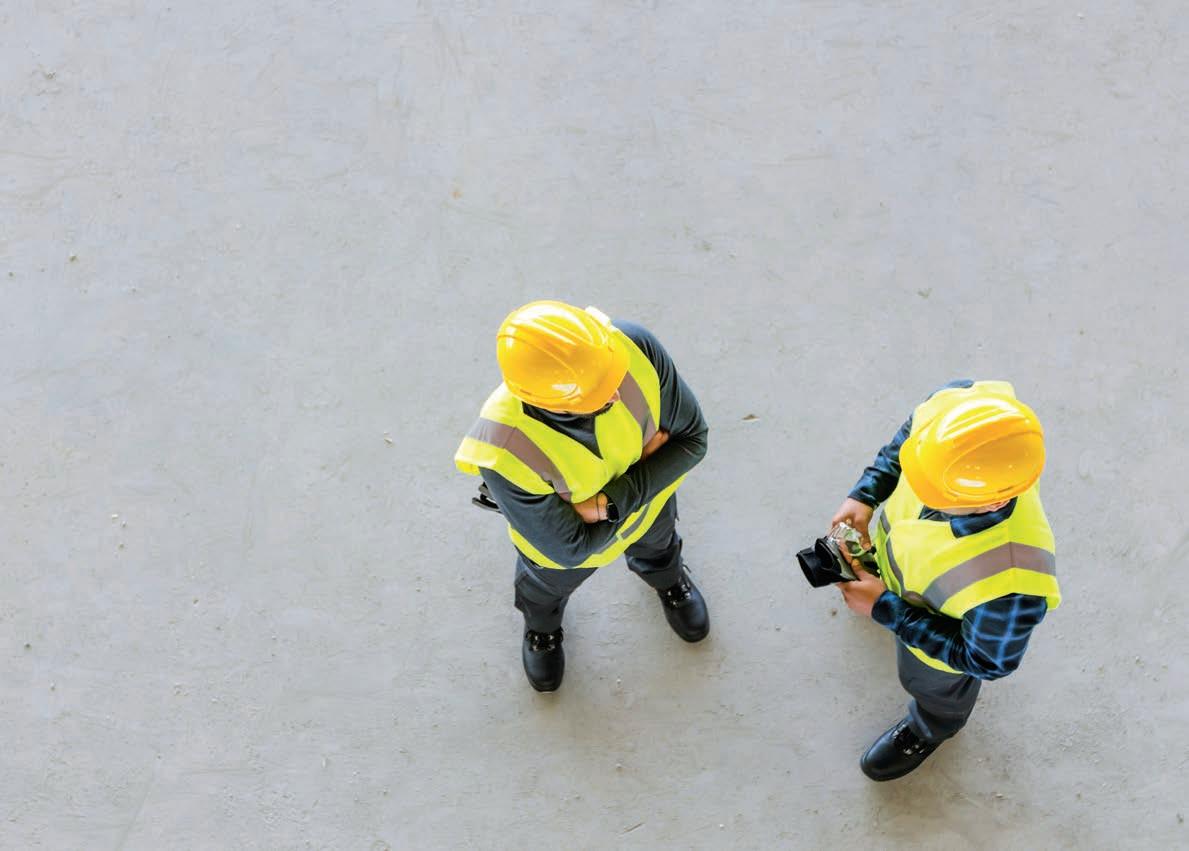
“Everyone deserves to go home safe, and Australian Standards contribute greatly to the safety of electrical installations.”
Australian Standards can be a complex requirement for solar installers, but understanding their implementation can be highly advantageous.
installation practices could lead to significantly varied and potentially dangerous outcomes. Everyone deserves to go home safe, and standards contribute greatly to the safety of electrical installations.
If you have called the Clean Energy Council for support or spoken to one of us at an industry event – such as All-Energy in Melbourne or Energy Next in Sydney – you might have noticed how we use and
reference Australian Standards. This provides a great example of the benefit standards impart.
When providing feedback on how best to approach a piece of work, or explaining a concept, we reference Australian Standards’ clauses to provide specific context and reason. Using standards in this way gives a strong foundation to explain how and why you went about your work.
In the event of an inspection or audit of your work, this knowledge can prove particularly useful. Standards become the language by which the issue is described,

and by which the case can be argued, or the requirements to rectify can be clarified.

Spending time deepening our understanding of Australian Standards and the role they play in the work we do as electricians is just the fi rst step in leveraging them to our advantage.

Understanding how to easily navigate and use a standard, the language that is used, and the process by which they are developed and implemented all contribute to getting the most out of the relevant standards to our work.
To assist in this understanding, the Clean Energy Council has developed an advice document to support electrical workers in understanding and implementing standards.
Electricians take the time to thoroughly understand a new tool, or procedure we need to follow to complete our work. Applying this approach to Australian Standards turns what could be viewed as a burden into an advantage that can inform us and those we work with, and greatly benefit the way we conduct our daily work.
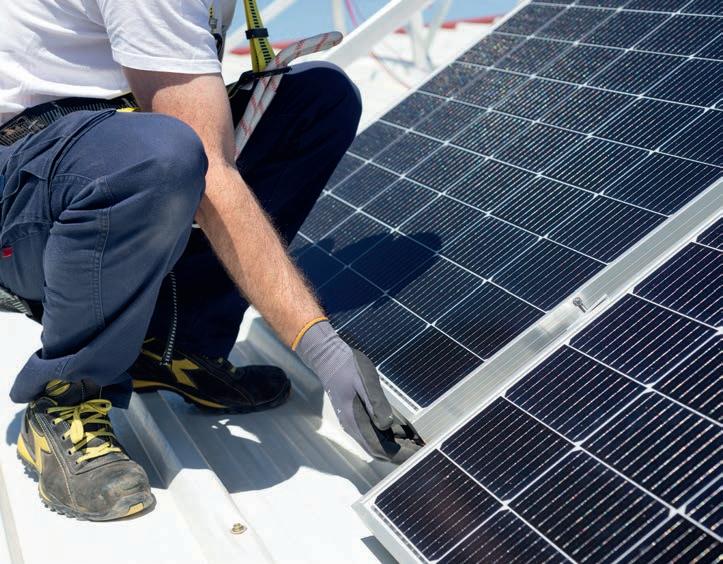
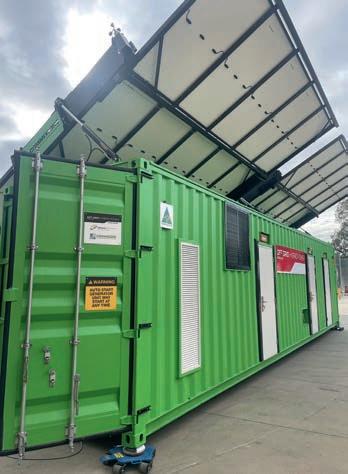 By Gavin Dennett
By Gavin Dennett
Being based in a regional centre, o -grid specialists Commodore Australia know all about the power needs of residents and businesses living and working in rural and remote locations. With its head o ce in Shepparton, Victoria, the company is experienced at o ering power solutions to people located o the grid, both locally and Australia-wide.
The company’s head electrician, David Simonis, has worked for the company for 18 months, leading the team designing solar and batteries for residential and commercial customers. With no two o -grid jobs ever being the same, his role at Commodore Australia is always interesting and o ers ongoing learning experiences.
How did you start in your electrical trade?
Out of year 12, I went into an electrical apprenticeship with a company that did
a lot with commercial solar. They had a big contract through Origin Energy where they would install 100kW jobs and some bigger ones as well. I worked on a lot of jobs ranging from standard domestic 6.6kW to 20kW, up to 100kW. I did that for four years, which cemented the process of solar for me. I got involved with a little bit of battery work there, but it was mainly grid connect.
What was your next move?
When I fi nished my apprenticeship, I moved to Commodore Australia, which specialises in o -grid and batteries. I completed my three courses of grid-connect solar, hybrid on-grid batteries and complete o -grid.


What does your role entail?
I’m the head sparky here and it has been a good learning curve getting involved with solar design work and batteries, as well as installs. We design for customers and

do a lot of the pre-wiring of systems so sparkies can get them onsite, mount the solar on the roof and get it in. I look over the design, and work closely with the production side of the pre-wired systems in factory, where we have a bunch of electricians and apprentices who build them. I look over the jobs to make sure they are all good to go, and run the tradesmen through how to build the systems.
Is there a growing market for off-grid in Shepparton and the surrounding region?

Yes, there is huge demand with a lot of the newer builds on farms out in the country, where they get a quote for $100,000 from their power company to get grid connected. They can put that money into solar, inverters and batteries and get a really good self-sufficient set up, which often comes in a lot cheaper than grid connect. People love that flexibility. In Shepparton, it’s not so much an issue because the infrastructure is there, however a lot of the remote people we deal with are close by, within half an hour of town.
Tell us about Commodore’s hybrid container off-grid systems. We work with some large mining companies, and just finished a big job of a 40-foot container with our designed solar panels on the roof. It’s got three layers [of PV] and they can slide on top of each other, expand out and lift to around 30 degrees.
It’s all hydraulic and automated with switches and wind sensors so it will pack up itself if wind speeds get too high. These systems go into some pretty harsh environments, and they have three-phase 30kVA worth of inverters and up to 160kWh of battery storage, plus a diesel generator for extra backup.

They must be cost-effective power solutions for remote work locations. For a lot of mines, their only option is to get a diesel generator onsite and run it flat out. But given the current high fuel prices, it’s a no-brainer to look into these solutions. The rooftop solar, inverter and battery are offsetting the use of diesel. If these sites become grid connected, not only is it expensive – millions of dollars – but it’s a more permanent solution. The beauty of the containers we build is they are portable and can be moved from site to site. They are an absolute game changer for mines.

Is the roof system patented?
Putting batteries in a shipping container is not a new thing, but the Commodore design of the panels on the roof is patented. Maximising roof space of a container is a real issue. You can put on a row of panels but you will only get about 12 panels on a 40-foot container. With our set up, we have gotten up to 12kW of solar onto the roof of the container, plus you can also expand and plug more solar into them.


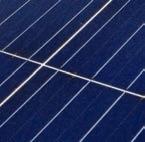




Marco Stella from CORE Markets provides a snapshot of Australia’s clean energy market.
Following the sharp decline in prices that started in late 2022, the LGC price bottomed out at $39.75 shortly after the 14 February surrender – levels unseen since late 2021.
The subsequent recovery saw the price move in largely one-way tra c back up to the $49 range by late March 2023, where it skirted the $50 level for several weeks before pushing through in mid-April.
Prices at the time of writing are:
• LGC spots: $52.60.
• Cal 23: $53.
• Cal 24: $45.75.
• Cal 25: $38.30.
March 2023 saw the release of the Q4 Quarterly Carbon Market Report from the Clean Energy Regulator. The report noted a surplus of around nine million LGCs,










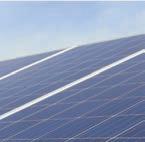

although raw figures per the registry suggest a figure closer to 11 million so some assumptions have been made to explain this discrepancy.

Voluntary cancellations for the quarter were only 1.2 million LGCs. This represents a 75 per cent drop compared to Q3 2022, which recorded the largest quarter of voluntary cancellations to date.
With these two supply/demand realities as they are, it will be interesting to see how the price continues to change as we move towards the middle of 2023.
The STC market has continued to see limited trading with the clearing house having slid further into deficit, which at the time of writing is more than six million STCs.
The market had initially anticipated a return to surplus by Q3, with some strong creation growth across February, however this now seems unlikely given lower creations across March and April. Accordingly, forwards for strips for 2023 have been trading at $39.50 to $39.80.
The VEEC market was sluggish to start 2023, despite the suite of changes that would ultimately reduce supply coming into e ect on 31 January. The price initially ranged between $68 and $69 across most of January and February.
The impacts on creation have since started to show, resulting in the price pushing beyond its initial range. The spot price briefly touched $75 in the second week of March and has since been relatively stable, trading at $72.50 to $73 for most of March and April on the back of lacklustre creation. At the time of writing, the price has softened slightly to $71.25.
With no meaningful pipeline for activities to rejuvenate creation, the market is turning its attention to the next Federal Election in the hopes money may be attributed towards energy e ciency which could put meat on the bone following recent electrification policy discussions that has so far yielded little meaningful change to assist in the transition away from gas.
The volatility that started the year within the ESCs has persisted across the
fi rst quarter. After trading in the low $33 range in late January, the price softened to the low $29 range by late February as creation ramped up, owing to delayed creation from refrigerated display cabinets and an uptake in heat pump activity.
The price then jumped to $32 in early March, after the Independent Pricing and Regulatory Tribunal (IPART) “fi red a shot across the bow” citing concerns around sales tactics and potential installation of heat pumps that were not fit for purpose.
This was followed by a significant,
The Renewable Energy Hub has recently acquired the TFS Green APAC business, and the combined entity has been rebranded as CORE Markets, an end-to-end markets, technology and climate solutions partner for business. Marco Stella is head of carbon and renewable markets at CORE Markets.

short-lived spike in forward prices with strips for 2024 trading up to $34, in anticipation the department/regulator may take further action to tighten the heat pump activity.
With no further action forthcoming and continued strong creations, ESCs have since softened further to $30.75 at the time of writing.
The above information has been provided by CORE Markets and relates, unless otherwise indicated, to the spot prices in Australian dollars, as of 28 April, 2023.
Australian solar pioneering company Solahart recently celebrated the milestone of installing its one millionth rooftop PV panel.
Originally a hot water company, Solahart expanded into rooftop solar in 2011 and has made significant inroads into Australia’s small-scale photovoltaic market.
“Solar energy generated by Solahart’s fleet of solar panels as part of PV systems is equivalent to 315MW of peak solar capacity, which is almost as large as the Collie Power Station in Western Australia,” says Sean Box, head of Solahart’s solar power and battery storage division.

“This makes Solahart a significant player in the energy mix for Australia – a massive achievement from what was purely a hot water company 12 years ago.”
Making a significant contribution to the company reaching the one-million mark for


rooftop solar has been Solahart Newcastle, with the dealership installing more than 100,000 solar panels in the NSW local region.
“Congratulations to the Solahart Newcastle team and to the forwardthinking communities in the Central Coast and Upper Hunter regions, who are looking to clean, solar energy to power their homes and businesses,” says Stephen Cranch, general manager, Solahart Industries.

Solahart produced its fi rst solar water heater in 1953 and has since exported in excess of one million of its systems to more than 70 countries around the world.
“We would not be here today without our incredible nationwide network of Solahart dealers, commitment to innovation and quality, and our dedication to Aussie households and businesses,” says Cranch.
“One million panels installed is truly a significant milestone and proves Australia is prepared for a sustainable, renewable-led future powered by solar.”
Solahart has another reason to celebrate this year, with the company recently being named Australia’s number one solar company for overall customer satisfaction

in the Solar Installers category by leading comparison website Canstar Blue.
Based on surveyed Australian customers ranking their experience from one to 10, Solahart came out on top with five-star ratings in the categories of “overall satisfaction”, “set-up cost”, “customer service and advice”, “performance of solar system”, “durability” and “installation process”.
“As we celebrate our 70th year in solar, it’s wonderful to receive the top solar installer Canstar Blue award, which represents the dedication and hard work of the Solahart team going above and beyond to help Australians work towards a brighter, renewable-led future,” says Cranch.
“Our innovative product range and commitment to customer support helps Aussie households and businesses capture and store more energy from the sun, save thousands on their energy bills and actively contribute to a more sustainable planet.”
With over 12 years of delivering renewable energy courses in 30 towns and cities across Australia, is a training organisation with a focus on the precise needs of tradies looking to improve their opportunities in a rapidly changing world. We are not just a training organisation – we are contractors as well.
Electrical –Renewable energy courses
What’s new?
Our new courses include:
• Inspector skill set
• Site Survey skills set for nonelectricians
• Design only skills set for electrical engineers
Courses available to complete with us include:
• grid connect
• battery storage and

• off grid.
Complete another five units in your own time.
Enrolment starts 1 May 2023.
$7840
We are delivering courses in Western Australia throughout July 2023:
• Port Hedland Off Grid Course 13 July to 16 July
• Port Hedland Battery Storage Course Practical 17th July
• Perth Off Grid Course 27 July to 30 July

We are delivering more EV courses this year with a focus on:

• Seminar on charging
• EV conversion
• EV chargers installation
• Training EV technicians.
Scan the QR code above to book your attendance and to find out more about our new courses. You can also contact us through:
1800 059 170 skillbuild.edu.au























